Seismological Society of America > News
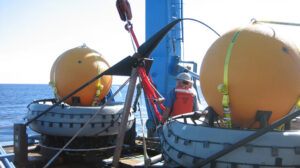
27 March 2025—Hydroacoustic signals captured by the world’s international nuclear monitoring system suggest an underwater landslide may have broken communications cables and disrupted internet traffic in west African countries for several weeks in March 2024. Researchers used data collected by hydrophones installed by the International Monitoring System of the Comprehensive … Continue Reading »
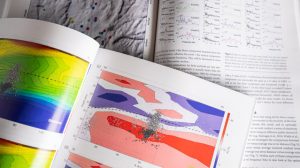
13 March 2025–SSA is proud to recognize our 2024 peer reviewers for the Bulletin of the Seismological Society of America (BSSA), Seismological Research Letters (SRL) and The Seismic Record (TSR). “SSA’s journals are known for their rigorous peer review and for the valuable reviewer feedback that helps authors improve the … Continue Reading »
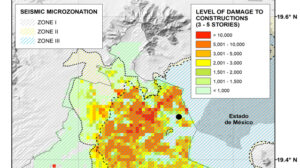
11 March 2025– A recent swarm of small shallow earthquakes in Mexico City in 2019 and 2023 caused surprisingly strong ground shaking, prompting researchers to wonder how shaking from a moderate sized earthquake might impact buildings across the city. In the Bulletin of the Seismological Society of America, Miguel Jaimes and … Continue Reading »
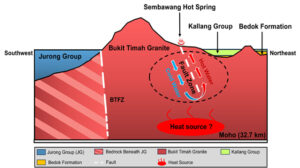
5 March 2025 — A new seismic study of Singapore could guide urban growth and renewable energy development in the coastal city nation, where 5.6 million residents live within an area of 734 square kilometers. The study, published in Seismological Research Letters, identifies areas with increased risk of ground shaking and … Continue Reading »
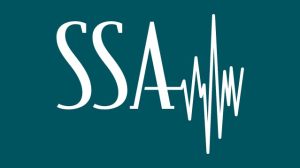
A joint statement by SSA President Heather DeShon and President-Elect Susan Bilek 15 February 2025 — The recent termination of thousands of federal employees, including employees within the U.S. Department of the Interior, Department of Energy and Department of Commerce, will undermine the critical scientific expertise required to keep the … Continue Reading »
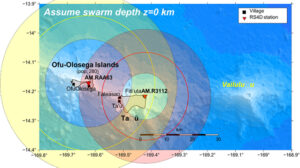
14 February 2025 — In late July to October 2022, residents of the Manu’a Islands in American Samoa felt the earth shake several times a day, raising concerns of an imminent volcanic eruption or tsunami. An earthquake catalog for the area turned up nothing, because the islands lacked a seismic … Continue Reading »

February 13—The Seismological Society of America held its Board of Directors election on Friday, 3 January 2025. The following members were elected to a three-year term beginning 14 April 2025 at the SSA Annual Meeting in Baltimore, Maryland. Ashly Cabas, Associate Professor, Department of Civil, Construction, and Environmental Engineering … Continue Reading »
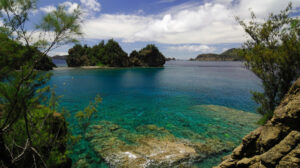
22 January 2025—The magnitude 7.9 Bonin Islands earthquake sequence, which ruptured deep within the earth near the base of the upper mantle, did not include an aftershock that extended to record depths into the lower mantle, according to a study in The Seismic Record. When Hao Zhang of the University … Continue Reading »
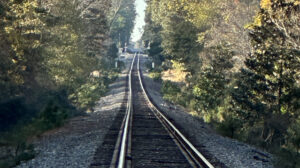
22 January 2025—Gather around, and let Susan Hough tell you the tale of the Summerville Light. Legend has it that the strange orb sometimes seen hovering over the railroad tracks in the remote area around Summerville, South Carolina is a lantern borne by a ghost whose husband lost his head … Continue Reading »

20 January 2025–SSA is pleased to announce the recipients of several of the Society’s awards for 2025. The Harry Fielding Reid Medal, the Charles F. Richter Early Career Award, the Frank Press Public Service Award and the SSA Distinguished Service Award are among the highest honors conferred by the Society. … Continue Reading »
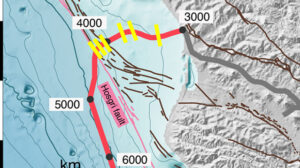
10 January 2025—Using an existing telecommunications fiber optic cable running along the sea floor, researchers identified faults and tracked the locations of whales traveling up and down the central California coast. Their study, published in Seismological Research Letters, demonstrates the potential of distributed acoustic sensing (DAS) for visualizing the geohazards … Continue Reading »
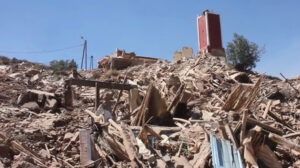
24 December 2024–The rapid, decade-long depletion of groundwater in Morocco’s Haouz plain may have affected the accumulation of tectonic stress that led to the deadly 8 September 2023 magnitude 6.8 Al Haouz earthquake, according to a new study published in the Bulletin of the Seismological Society of America. Bhaskar Kundu … Continue Reading »

11 December 2024–Military vehicles rumbling toward the presidential palace, bombs dropped by the Chilean Air Force, and an eerie quiet descending over Santiago after a curfew imposed by a military junta—a lone seismometer captured all these features of the 1973 Chilean coup d’état. In Seismological Research Letters, Sergio León-Rios of … Continue Reading »

15 November 2024–The Earthquake Engineering Research Institute (EERI), the Consortium of Organizations for Strong Motion Observation Systems (COSMOS), and SSA are pleased to announce that Kenneth W. Campbell of CoreLogic Inc. (retired) is the recipient of the 2025 Bruce Bolt Medal. Campbell was recognized for his 50 years of research … Continue Reading »
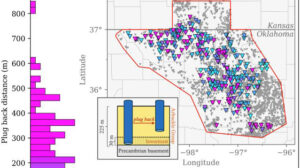
13 November 2024–Wastewater injection resulting from oil and gas production in Oklahoma caused a dramatic rise in seismic activity in the state between 2009 and 2015. But regulatory efforts to backfill some injection wells with cement and reduce injection volumes have been effective in lowering the state’s induced earthquake rate, … Continue Reading »

1 November 2024–The Earthquake Engineering Research Institute (EERI) and SSA are pleased to announce that Laurie Baise, professor and chair of the department of civil and environmental engineering at Tufts University, is the 2025 recipient of the William B. Joyner Lecture Award. Baise will deliver the Joyner Lecture at the … Continue Reading »

31 October — The SSA Board of Directors approved a new fee structure to provide more options for authors submitting to the Bulletin of the Seismological Society of America (BSSA) and Seismological Research Letters (SRL). The price and policy changes are intended to Create a fair and equal fee structure … Continue Reading »
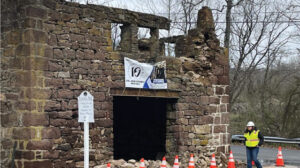
1 October 2024–The magnitude 4.8 Tewksbury earthquake surprised millions of people on the U.S. East Coast who felt the shaking from this largest instrumentally recorded earthquake in New Jersey since 1900. But researchers noted something else unusual about the earthquake: why did so many people 40 miles away in New … Continue Reading »
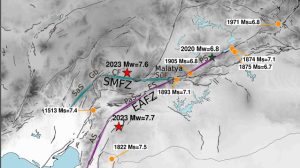
25 September 2024–The five largest continental transform earthquakes since 2000 all originated on a branch of the main fault—and two researchers predict that the next great earthquake of this type will also get its start on a branch or splay fault. Last year’s magnitude 7.8 Pazarcık earthquake in Türkiye was … Continue Reading »
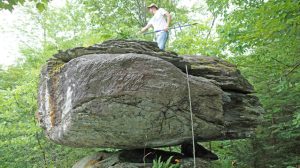
10 September 2024–Five boulders, delivered by glacier and balancing delicately on rocky pedestals in northern New York and Vermont, can help define long-term maximum shaking intensity of earthquakes in the region. Seismologists examine the fragility of precariously balanced rocks, or PBRs, to determine the intensity of shaking would be needed … Continue Reading »
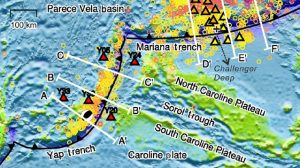
29 August 2024–About 21 million years ago the Yap Trench collided with a thick piece of ocean crust called the Caroline Plateau. But is the Yap Trench still an active subduction zone? And why does the Yap Trench look a little different from its subduction zone neighbors in the western … Continue Reading »
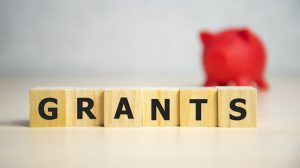
26 August 2024–Open every February and July, SSA’s grant programs remain one of the most important ways that SSA helps develop a skilled workforce of seismologists who will continue to advance earthquake science. Funded by generous donations from our members to the Society’s General Fund, as well as a surplus … Continue Reading »
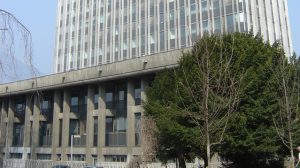
15 August 2024–Data recorded by seismic instrumentation in buildings where ground motion is weak to moderate can help engineers better understand structural responses to earthquakes, according to a new paper published in the Bulletin of the Seismological Society of America. Philippe Guéguen and Ariana Astorga at Université Grenoble Alpes – … Continue Reading »
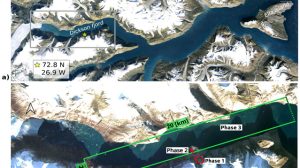
8 August 2024–In September 2023, a megatsunami in remote eastern Greenland sent seismic waves around the world, piquing the interest of the global research community. The event created a week-long oscillating wave in Dickson Fjord, according to a new report in The Seismic Record. Angela Carrillo-Ponce of GFZ German Research … Continue Reading »
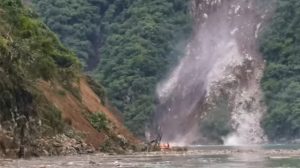
7 August 2024–Using data collected from a 2022 magnitude 6.8 earthquake in Luding County in China’s Sichuan Province, researchers tested whether Global Navigation Satellite System (GNSS) observations could be used for rapid prediction of earthquake-triggered landslides. In their report in Seismological Research Letters, Kejie Chen of the Southern University of … Continue Reading »
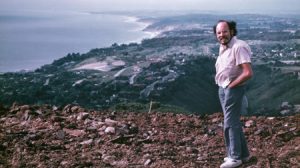
05 August 2024 –A $10,000 gift from Paul Andrew Spudich’s sister, Suzanne, to the Paul Andrew Spudich Fund has expanded its travel grant offerings for early-career and student members. Providing the biggest boost to the fund since its 2023 launch, the new gift will help SSA reach its goal of … Continue Reading »
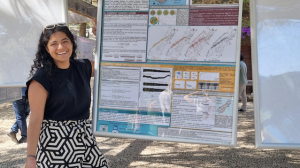
11 July 2024 – Ilma del Carmen Juarez-Garfias, a doctoral student at Victoria University of Wellington, said it was a privilege to attend the 7 th edition of the school on Passive Imaging & Monitoring in Wave Physics: From Seismology to Ultrasound in Corsica, France. SSA’s new Paul Andrew Spudich Travel … Continue Reading »
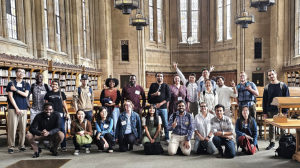
11 July 2024–“We are on fire!” That’s part of the positive feedback that Suzan van der Lee of Northwestern University and Emily Brodsky of the University of California, Santa Cruz received after their May training workshop on volcano and rift seismicity in East Africa, supported in part by a 2024 … Continue Reading »
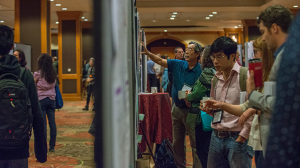
Honoring Student Excellence in Anchorage In an ongoing effort to support and promote the outstanding work of SSA student members, the Society is pleased to present 19 students with a 2024 Student Presentation Award. The SSA awards program seeks to highlight excellent student presentations (poster or oral) at the SSA … Continue Reading »

SSA’s newest grant program sends early-career member to Osaka, Japan Chunyang Ji, a postdoctoral scholar at North Carolina State University whose research focuses on the modeling and assessment of high-frequency ground motions, is the first SSA member to participate in a seismological meeting with the aid of a Paul Andrew … Continue Reading »

SSA announced four travel grants to student and early-career members to participate in the 2024 Photonic Seismology Conference. The travel grants are made possible by generous donations from the community to the General Fund and the Kanamori Fund. Travel Grant Recipients: Richard Asirifi, Texas A&M University Thomas Luckie, Sandia National … Continue Reading »
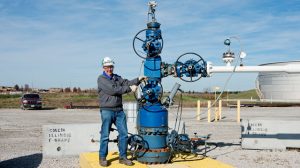
8 May 2024–Pore pressure diffusion generated by carbon dioxide injected underground at a carbon storage site in the Illinois Basin is the likely cause of hundreds of microearthquakes that took place at the site between 2011 and 2012, according to a new analysis. The modeling study published in the Bulletin … Continue Reading »
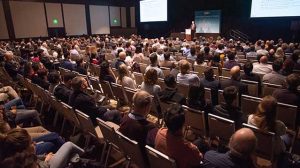
Nominations are now open for the next Joyner Lecturer. The deadline for submissions is 30 June 2024. 6 May 2024–The William B. Joyner Memorial Lecture delivered by Helen Crowley of Global Earthquake Model (GEM) Foundation at the 2024 SSA Annual Meeting marked the 20th year of the award. Established in … Continue Reading »
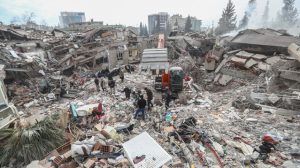
3 May 2024–About six months before the 2023 Mw 7.8 Kahramanmaraş earthquake in Türkiye, transient short pulses of low-frequency seismic activity were occurring on the east side of the East Anatolian Fault Zone, researchers reported at SSA’s 2024 Annual Meeting. Learning more about the properties and physical origins of these … Continue Reading »
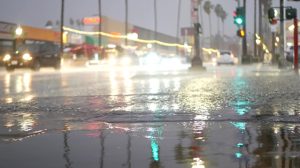
3 May 2024–Record-setting storms in 2023 filled California’s major reservoirs to the brim, providing some relief in a decades-long drought, but how much of that record rain trickled underground? Shujuan Mao of Stanford University and her colleagues used a surprising technique to answer this question for the greater Los Angeles … Continue Reading »
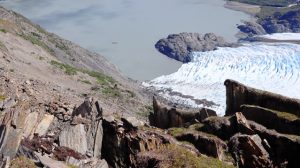
2 May 2024–The names might not be familiar—Cowee Creek, Brabazon Range, Upper Pederson Lagoon—but they mark the sites of recent lake tsunamis, a phenomenon that is increasingly common in Alaska, British Columbia and other regions with mountain glaciers. Triggered by landslides into small bodies of water, most of these tsunamis … Continue Reading »
![[caption id="attachment_41055" align="aligncenter" width="640"] The Physics Experiment 1-A field team outside the entrance to P-tunnel at Nevada National Security Site. | LLNL[/caption]](https://www.seismosoc.org/wp-content/uploads/2024/04/Myers-640x358px-300x168.jpg)
2 May 2024–On an October morning in 2023, a chemical explosion detonated in a tunnel under the Nevada desert was the launch of the next set of experiments by the National Nuclear Security Administration, with the goal to improve detection of low-yield nuclear explosions around the world. Physics Experiment 1-A … Continue Reading »
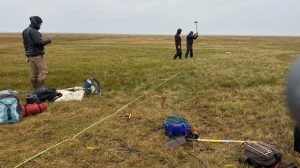
2 May 2024–Permafrost in Utqiaġvik, Alaska, differs from place to place under the surface, ranging from ice rich zones to unfrozen layers in both undisturbed and disturbed tundra, according to a new report discussed at the Seismological Society of America (SSA)’s 2024 Annual Meeting. Using multiple geophysical techniques to explore … Continue Reading »
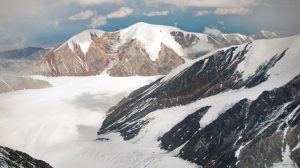
2 May 2024–A recent study of the crust below south-central Alaska, across the Denali Fault, suggests there may be a reservoir of magma located below the enigmatic Denali Volcanic Gap, researchers reported at the Seismological Society of America (SSA)’s 2024 Annual Meeting. The Denali Volcanic Gap (DVG) is the roughly … Continue Reading »
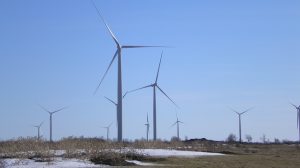
2 May 2024–As wind power becomes a widespread and cost-effective renewable energy source at sites throughout the world, researchers are focusing on the propagation of seismic and acoustic waves that wind-harnessing turbines produce. At the Seismological Society of America (SSA)’s 2024 Annual Meeting, researchers presented simulations of turbine-driven wave propagation … Continue Reading »
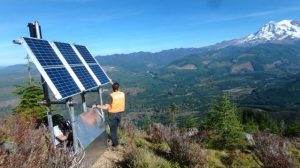
2 May 2024–In the shadow of Washington State’s Mount Rainier, about 90,000 people live in the path of a potential large lahar—a destructive, fluid and fast-moving debris flow associated with volcanic slopes. At the Seismological Society of America (SSA)’s 2024 Annual Meeting, U.S. Geological Survey volcano seismologist Seth Moran described … Continue Reading »
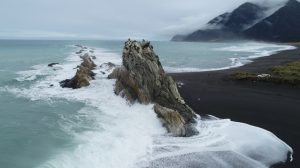
1 May 2024–Friction along a fault during an earthquake can sometimes generate a rise in temperatures high enough to produce a signal in the organic and mineral material contained within the fault’s rocks. At the Seismological Society of America (SSA)’s 2024 Annual Meeting, Genevieve Coffey of GNS Science discussed how … Continue Reading »

1 May 2024–Tiny seismic signals captured around the globe can be used to build a picture of the Earth’s inner core, its fabric made up of differences in the size, shape and orientation of iron grains. This glimpse at the inner core also offers a window into the evolution of … Continue Reading »
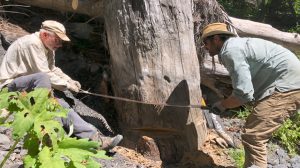
1 May 2024–Trees caught up in two prehistoric, devastating landslides in the Coast Ranges of northern California suggest that the landslides could be linked to major earthquakes, including the magnitude 7.9 1906 San Francisco earthquake, researchers said at the Seismological Society of America (SSA)’s 2024 Annual Meeting. In the Mule … Continue Reading »
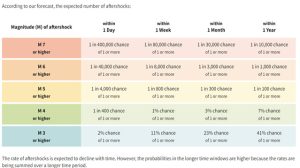
1 May 2024–When a magnitude 5+ earthquake occurs in the United States, the U.S. Geological Survey makes a variety of aftershock forecast communication products available to the public. But is there an ethical responsibility to make aftershock products more widely available to people affected by earthquakes in other countries? In … Continue Reading »

22 April 2024–Recipients of the first SSA Community Grants of 2024 will support students attending a training workshop on volcano and rift seismicity in East Africa and help organize a popular annual seismology workshop for students. Suzan van der Lee of Northwestern University and Emily Brodsky of the University of … Continue Reading »
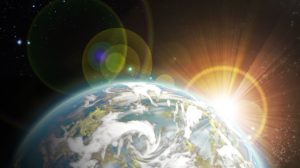
1 April 2024— Five student and early-career members will receive travel grants to participate in scientific conferences as part of the Global Travel Grants program, which provides financial support to SSA members. The competitive program received 22 quality applications this cycle. Sergio Leon-Rios (Advanced Mining Technology Center – Universidad de … Continue Reading »
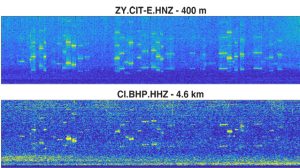
13 March 2024–Seattle may have experienced its own Swift Quake last July, but at an August 2023 concert Taylor Swift’s fans in Los Angeles gave scientists a lot of shaking to ponder. After some debate, a research team led by Gabrielle Tepp of Caltech concluded that it was likely the … Continue Reading »
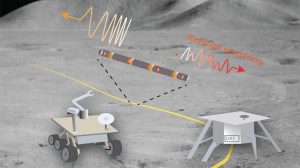
28 February 2024–An increasing number of seismologists are using fiber optic cables to detect seismic waves on Earth—but how would this technology fare on the Moon, and what would it tell us about the deep layers of our nearest neighbor in space? In Seismological Research Letters, Wenbo Wu of Woods … Continue Reading »
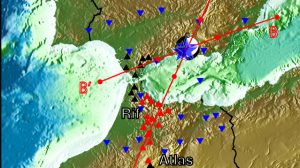
21 February 2024–Strange seismic wave arrivals from a 2010 earthquake under Spain were the clues that led to an unexpected discovery beneath the western Mediterranean: a subducted oceanic slab that has completely overturned. The waveforms paint a picture of a slab that descended rapidly into the Earth’s mantle and flipped … Continue Reading »
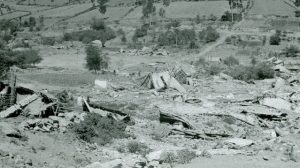
15 February 2024–A new measure that compares earthquake-related fatalities to a country’s population size concludes that Ecuador, Lebanon, Haiti, Turkmenistan, Iran and Portugal have experienced the greatest impact from fatalities in the past five centuries. The new impact measure, introduced in the Bulletin of the Seismological Society of America by … Continue Reading »

23 January 2024–SSA is pleased to announce the recipients of several of the Society’s awards for 2024. The Harry Fielding Reid Medal, the Charles F. Richter Early Career Award, the Frank Press Public Service Award and the SSA Distinguished Service Award are among the highest honors conferred by the Society. … Continue Reading »

18 January 2024—Through the work of our Government Relations Committee, SSA is supporting the Congressional reauthorization of the National Earthquake Hazards Reduction Program (NEHRP), through bipartisan legislation introduced today by U.S. Senators Alex Padilla (D-Calif.) and Lisa Murkowski (R-Alaska). NEHRP is the federal government’s coordinated long-term nationwide program to reduce … Continue Reading »

SSA announced 20 travel grants to student, early-career and international members to participate in the 2024 Annual Meeting. The travel grants are made possible by generous donations to the Kanamori Fund, Annual Meeting Travel Fund, General Fund and Joyner Fund. Student Travel Grant Recipients: Himanshu Agrawal, University of Edinburgh Sandra Donna … Continue Reading »
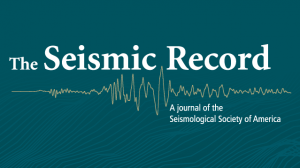
8 January 2024–The Seismological Society of America’s journal The Seismic Record (TSR) has been accepted in Scopus®, Elsevier’s comprehensive and multidisciplinary abstract and citation database. Scopus® includes more than 1.8 billion references dating back to 1970, including journals, trade journals, conference proceedings and books. The Scopus® Content Selection & Advisory … Continue Reading »
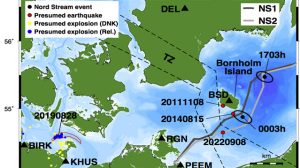
3 January 2024–Seismic events that coincided with sudden drops in pressure within the Nord Stream 1 and 2 natural gas pipelines in September 2022 alerted the world to the rupture of pipelines in the western Baltic Sea. The suspected act of sabotage, which reportedly used explosive charges to rupture the … Continue Reading »
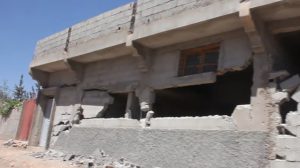
14 December 2023–In their rapid characterization of the magnitude 6.8 Al Haouz earthquake in Morocco, researchers from the U.S. Geological Survey’s National Earthquake Information Center (NEIC) suggest that the earthquake ruptured roughly 25 kilometers deep beneath the surface. The USGS source modeling, published in The Seismic Record, shows a compact … Continue Reading »
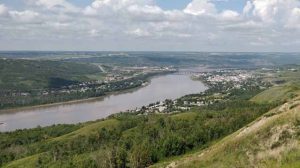
13 December 2023–Using questionnaires created to determine whether a particular earthquake is natural or induced by human activity, a panel of experts concluded that the November 2022 magnitude 5.2 Peace River earthquake sequence in Alberta, Canada was likely to be induced. The case study published in Seismological Research Letters was … Continue Reading »

20 November 2023–Last year with your help, the SSA Annual Meeting Travel Fund supported 23 students and early-career members attending our 2023 meeting in Puerto Rico. SSA needs your generosity again to fully fund its 2024 Annual Meeting Travel Grant Program to bring even more of your future colleagues to … Continue Reading »
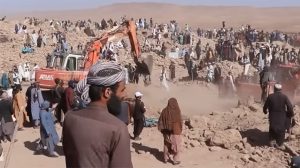
14 November 2023–The devastating September 2023 earthquake in Morocco and the unusual series of October 2023 earthquakes in Afghanistan are painful reminders of the seismic hazard that exists even in slowly deforming mountain belts away from major plate boundaries. Earthquakes take place infrequently in these regions, but their impacts can … Continue Reading »
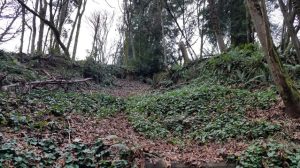
7 November 2023–New maps of more than 1,000 deep-seated landslides in the Puget Lowlands of Washington State provide evidence of the last major earthquake along the Seattle Fault about 1,100 years ago—and may also hold traces of older earthquakes along the fault. Clusters of landslides offer a potential record of … Continue Reading »
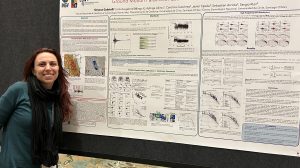
SSA’s 2023 Ground Motion Modeling Conference took place 10-13 October 2023 in Vancouver, Canada. Thanks to generous donations from the community to the Kanamori Fund, SSA was able to provide four travel grants to Early-career and Student members. Read on to learn about what this grant meant to one of … Continue Reading »

1 November 2023–The Earthquake Engineering Research Institute (EERI) and SSA are pleased to announce that Helen Crowley, secretary general of the Global Earthquake Model (GEM) Foundation, is the 2024 recipient of the William B. Joyner Lecture Award. Crowley will deliver the Joyner Lecture at the EERI Annual Meeting to be … Continue Reading »

1 November 2023–The chance discovery of a note written in a 15th century Hebrew prayer book fills an important gap in the historical Italian earthquake record, offering a brief glimpse of a previously unknown earthquake affecting the Marche region in the central Apennines. Paolo Galli, who found the note in … Continue Reading »
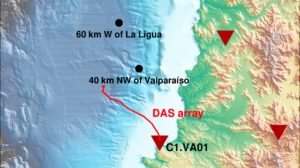
One of the biggest challenges for earthquake early warning systems (EEW) is the lack of seismic stations located offshore of heavily populated coastlines, where some of the world’s most seismically active regions are located. In a new study published in The Seismic Record, researchers show how unused telecommunications fiber optic … Continue Reading »
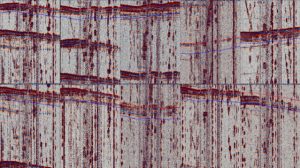
10 October 2023–Fiber optic cable snaking beneath the Penn State campus, passing under the athletic buildings and campus fields, can detect seismic waves generated by lightning storms. But what exactly causes lightning quakes—and why do we care about them? A new study published in the Bulletin of the Seismological Society … Continue Reading »
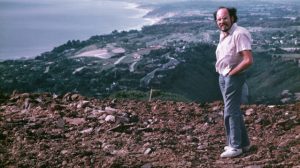
18 September 2023–A new fund at SSA honors the life and accomplishments of Paul Andrew Spudich (1950-2019) by supporting the professional development of Society members at the beginning of their careers in seismology. Through The Paul Andrew Spudich Fund, SSA will establish the Paul Andrew Spudich Travel Grant program, which … Continue Reading »

12 September 2023–Fires that raged in the days following the 1 September 1923 magnitude 7.9 Kantō earthquake killed roughly 90% of the 105,000 people who perished in and around Tokyo, making it one of the deadliest natural disasters in history—comparable to the number of people killed in the World War … Continue Reading »
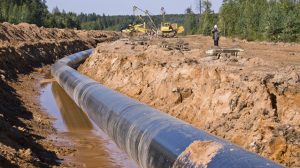
28 August 2023–After an earthquake strikes in an area with a buried gas pipeline network, it can be critical to identify where potential damage to the pipeline might have occurred—especially since these networks can cover hundreds of kilometers and may sometimes not be easily accessible. Forecasts of pipeline damage typically … Continue Reading »

This July, four SSA student and early-career members have been selected to receive Global Travel Grants to attend workshops or small meetings around the world. Venkata Gangadhara Rao (Institute of Geophysics, Polish Academy of Sciences) will use the grant to attend the 2024 EGU General Assembly. Leonardo Colavitti (Istituto Nazionale di … Continue Reading »
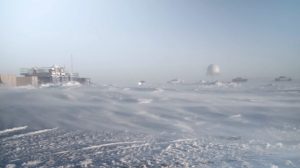
09 August 2023–A telecommunications fiber optic cable deployed offshore of Oliktok Point, Alaska recorded ambient seismic noise that can be used to finely track the formation and retreat of sea ice in the area, researchers report in The Seismic Record. Andres Felipe Peña Castro of the University of New Mexico … Continue Reading »
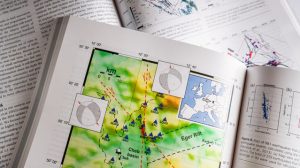
28 July 2023–SSA has developed an author name change policy and procedures for authors publishing in its three journals: the Bulletin of the Seismological Society of America (BSSA), Seismological Research Letters (SRL), and The Seismic Record (TSR). There are many reasons why journal authors may change names during their publishing … Continue Reading »
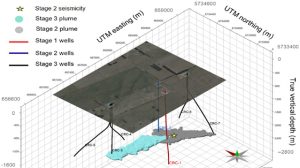
21 July 2023–Researchers at a field site in Victoria, Australia are among the first to use fiber optic distributed acoustic sensing (DAS) for high-precision tracking of induced seismicity from a small carbon dioxide (CO2) injection, according to a new study published in Seismological Research Letters. The CO2CRC Otway Project in … Continue Reading »
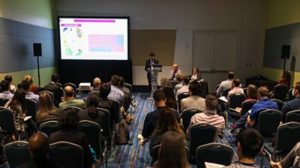
18 July 2023—It’s almost time to submit your session proposal for the next Annual Meeting. Learn how to get started at the SSA mentoring session on 25 July. Organizing a session for the SSA Annual Meeting is one of the best ways to make a splash in the global seismological … Continue Reading »
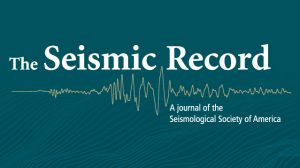
17 July 2023–The Seismological Society of America (SSA)’s journal The Seismic Record is now included in the Directory of Open Access Journals (DOAJ), a key community-driven service advocating best practices and standards in open access. The journal was included in DOAJ after meeting a rigorous set of qualifications with respect … Continue Reading »

13 July 2023 — The SSA community is invited to participate in a survey to identify the professional background and experience of those who engage with the Society. Member participation is at the heart of all successful SSA programs. We encourage participation in the process so that we are best … Continue Reading »
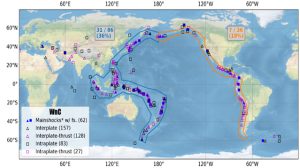
28 June 2023–Seismologists agree that foreshocks are the most widely identified signal of an upcoming mainshock earthquake. But do these foreshock sequences have distinctive characteristics that separate them from aftershock sequences, and could these characteristics be used to help forecast mainshocks? In a new paper in Seismological Research Letters, Nadav … Continue Reading »

23 May 2023–Three studies now published in the open-access journal The Seismic Record offer an initial look at the February 6, 2023 earthquakes in south-central Türkiye and northwestern Syria, including how, where, and how fast the earthquakes ruptured and how they combined as a “devastating doublet” to produce damaging ground … Continue Reading »
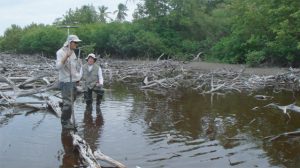
Leer en Español 20 April 2023–Tsunami deposits identified in a coastal mangrove pond in Northwest Puerto Rico could have come from a megathrust earthquake at the Puerto Rico Trench that occurred between 1470 and 1530, according to research reported at the Seismological Society of America (SSA)’s 2023 Annual Meeting. These … Continue Reading »
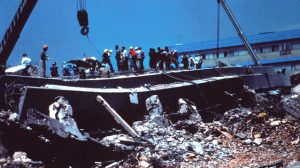
20 April 2023–Staff in public and private hospitals in Mexico City are likely to follow well-established and reinforced earthquake early warning (EEW) protocols for evacuation, according to an ongoing study. Overall, staff are likely to follow the protocols especially when they are “reinforced with drills that help practice the correct … Continue Reading »
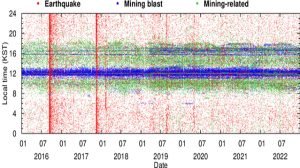
20 April 2023–South Korea is a relatively quiet country, seismically speaking, but a recent study identified more than 182,000 small seismic events–135,000 of which were related to mining explosions, according to a presentation at the Seismological Society of America (SSA)’s 2023 Annual Meeting. After using machine learning techniques to detect … Continue Reading »
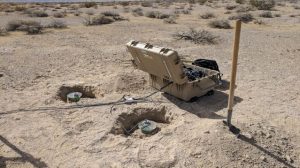
20 April 2023–Faults in the Ridgecrest, California area were very sensitive to solid earth tidal stresses in the year and a half before the July 2019 Ridgecrest earthquake sequence, researchers reported at the Seismological Society of America (SSA)’s 2023 Annual Meeting. “The signal of tidal modulation becomes extremely strong” after … Continue Reading »
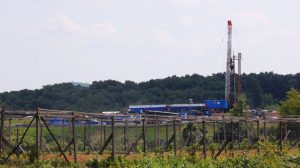
20 April 2023–A decade’s worth of research at oil and gas operations in the central and eastern United States has confirmed that fluid injection from hydraulic fracturing and wastewater disposal can induce seismicity. Now, data from hydraulic fracturing wells in eastern Ohio indicate that extraction activities also can influence the … Continue Reading »
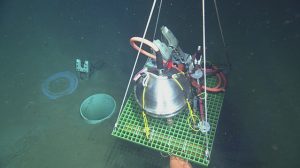
19 April 2023–Earthquakes, lava bubbling through the sea floor and fin whale calls are all part of the noisy seismic environment at Axial Seamount, an active submarine volcano located about 480 kilometers west of Oregon’s Cannon Beach. To identify the sources of all these seismic noises, Kaiwen Wang of Lamont-Doherty … Continue Reading »
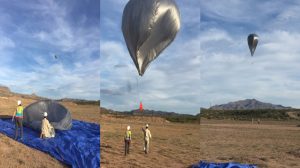
19 April 2023–On 24 September, about a cup’s worth of the rocky surface of asteroid Bennu will be returned to Earth in a sample return capsule, ending the 12-year mission of NASA’s OSIRIS-REx spacecraft as it lands in the Utah desert. Researchers led by Sandia National Laboratories will be “listening” … Continue Reading »
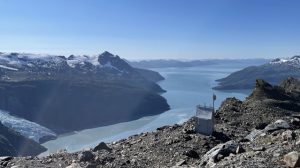
19 April 2023–Researchers have developed a way to quickly detect and assess glacial valley landslides in coastal Alaska, which can in some cases trigger dangerous local tsunamis. The strategy can detect and locate a landslide within a minute of occurring, within a couple of kilometers of its location if recorded … Continue Reading »
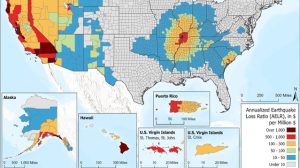
18 April 2023–Earthquakes cost the nation an estimated $14.7 billion annually in building damage and associated losses according to a new report released jointly by the U.S. Geological Survey and the Federal Emergency Management Agency at the 2023 Seismological Society of America meeting. The new estimate is twice that of … Continue Reading »
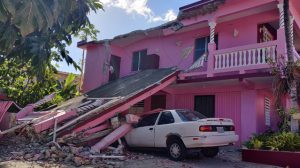
Leer en Español 18 April 2023–In the wake of the 2020-2021 Southwest Puerto Rico earthquake sequence, researchers asked emergency responders and residents in affected communities about the information they needed to prepare for the next earthquake. Residents surveyed door to door and in focus groups said they wanted to know … Continue Reading »
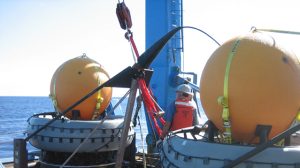
18 April 2023–Ocean-based hydrophones in the Comprehensive Nuclear-Test-Ban Treaty Organization (CTBTO)’s seismoacoustic monitoring network could provide a better look at how ocean temperatures are changing over time, according to a presentation at the Seismological Society of America (SSA)’s 2023 Annual Meeting. Finding new ways to monitor ocean temperatures is important … Continue Reading »
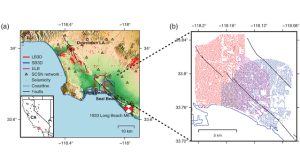
5 April 2023–Seismic arrays deployed in California’s Long Beach and Seal Beach areas detected more than a thousand tiny earthquakes over eight months, many of them located at surprisingly shallow depths of less than two kilometers below the surface. The findings, reported in Seismological Research Letters, confirm that the region’s … Continue Reading »
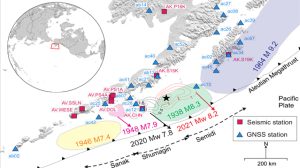
8 March 2023–When it comes to making a rapid estimate of ground motion and moment magnitude for an earthquake, using data from Global Navigation Satellite Systems (GNSS) might be a good alternative or addition to data from seismic stations. Researchers were able to compare how well each type of data … Continue Reading »
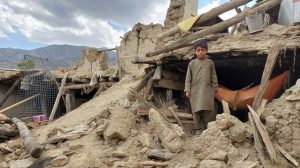
2 March 2023–Within minutes, a statistical model based on a global database of public reports of ground shaking can be used to identify an earthquake as a high- or low-impact event, according to a new study published in The Seismic Record. High-impact earthquakes, as defined by the study, are those … Continue Reading »
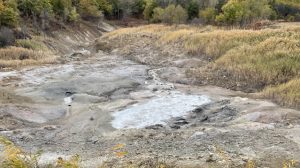
28 February 2023–At one of the world’s largest emission fields of non-volcanic carbon dioxide in southern Italy, researchers have detected a complex variety of seismic tremor signals, captured by a seismic array deployed in the region in the summer of 2021. In their study published in the Bulletin of the … Continue Reading »

NEW SESSION ADDED: February 2023 Earthquake Sequence in Turkey Deadline for submissions 22 March 2023 at 5:00 PM U.S. Pacific Time This late-breaking session will include oral and poster presentations related to the 6 February M7.8 and M7.5 earthquake sequence affecting southern Turkey and Syria. Topics could include but are … Continue Reading »
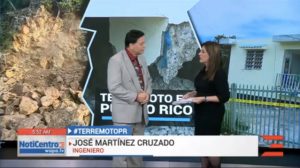
The Earthquake Engineering Research Institute (EERI), the Consortium of Organizations for Strong Motion Observation Systems (COSMOS), and the Seismological Society of America (SSA) are pleased to announce that José A. Martinez-Cruzado, professor of the civil engineering and surveying department at the University of Puerto Rico at Mayagüez is the recipient … Continue Reading »

19 January 2023–SSA is pleased to announce the recipients of several of the Society’s awards for 2023. The Harry Fielding Reid Medal, the Charles F. Richter Early Career Award, the Frank Press Public Service Award and the SSA Distinguished Service Award are among the highest honors conferred by the Society. … Continue Reading »

The Seismological Society of America held its Board of Directors election on Friday, 6 January 2023. The following members were elected to a three-year term beginning 17 April 2023 at the SSA Annual Meeting in Puerto Rico: Annemarie Baltay, research geophysicist, U.S. Geological Survey Principal fields: observational earthquake seismology, … Continue Reading »
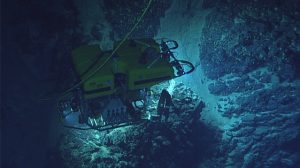
3 January 2023–Seafloor video collected by a remotely operated vehicle off the coast of Puerto Rico indicates that an underwater landslide was not the cause of a devastating tsunami that hit the island’s west coast after a 1918 earthquake. The proposed scar of the landslide is too old to be … Continue Reading »
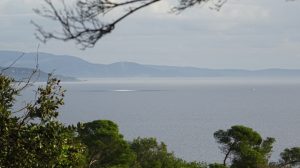
25 November 2022–A study of hydroacoustic, acoustic and seismic waves from underwater explosions off the French coast could help guide the disposal of unexploded World War II ordnance (UXO) in those waters, according to a new study published in the Bulletin of the Seismological Society of America. The French Navy … Continue Reading »
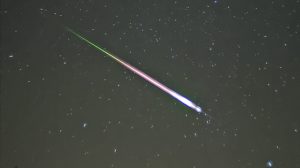
17 November 2022–Data collected by a large-N seismic array and distributed acoustic sensing (DAS) in Iceland offer one of the most detailed acoustic fingerprints of a meteoroid entering and disintegrating in the atmosphere. The dense record, described in Seismological Research Letters, allowed the researchers to distinguish acoustic phases that are … Continue Reading »
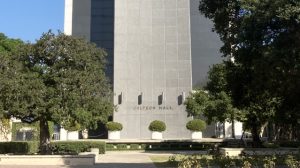
11 November 2022–Caltech Hall, a 55-year-old nine-story reinforced concrete building on the Caltech campus, has been getting structurally stiffer over the past 20 years, according to a new report published in The Seismic Record. Previous work by seismologists and engineers had documented the building softening—that is, decreasing in stiffness—from its … Continue Reading »

27 September 2022–Trapped inside the shoreline of a bay, the resonant interactions of a tsunami with regular waves can prolong the tsunami disturbance. For the 2021 magnitude 7 Acapulco, Mexico earthquake and tsunami, edge waves in the bay and the short continental shelf also had a surprisingly significant effect on … Continue Reading »
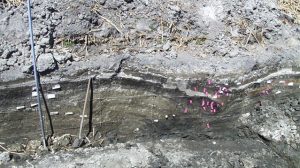
30 August 2022–The recurrence interval for earthquakes along some California faults may be on average 16% longer than previously estimated, according to a new study in the journal Seismological Research Letters. The revised estimates take into account a variable called event likelihood, which quantifies how likely it is that a … Continue Reading »
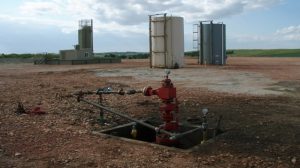
26 August 2022–Using machine learning to sift through a decade’s worth of seismic data, researchers have identified hundreds of thousands of microearthquakes along some previously unknown fault structures in Oklahoma and Kansas. The newly identified microearthquakes allowed the seismologists to map and measure earthquake clusters in the region, which has … Continue Reading »
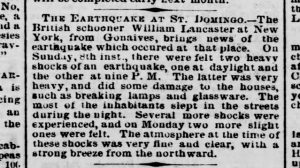
12 July 2022–Using details from historical newspaper accounts and letters, seismologists have learned more about Haiti’s 1860 Jour de Pâques (Easter Sunday) earthquake sequence, and how it might have impacted the country’s most recent devastating earthquakes. The new analysis published in the Bulletin of the Seismological Society of America suggests … Continue Reading »
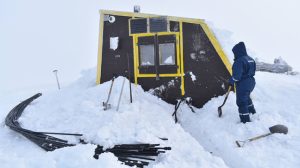
6 July 2022–Researchers used a fiber optic cable on the ice cap of an Icelandic subglacial volcano to detect low-frequency volcanic tremor, suggesting this technology could be useful in monitoring other ice-covered volcano systems. Their research published in The Seismic Record indicates that the floating ice cap, part of the … Continue Reading »
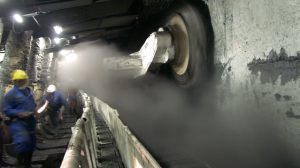
28 June 2022–An active underground mine can be a seismically noisy environment, full of signals generated by heavy machinery at work and induced seismicity. Now, researchers working with data from a longwall coal mine demonstrate a way to extract and separate the signals generated from mining activity from the background … Continue Reading »
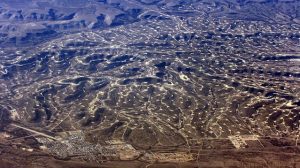
27 June 2022–Using a method that works backward from a set of observed earthquakes to test seismic models that fit those observations, researchers working in the Delaware Basin were able to determine whether earthquakes in the region since 2017 were caused by oil and gas operations. The new study published … Continue Reading »
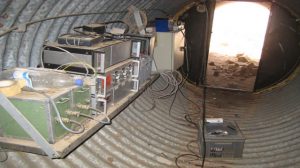
9 June 2022–In April, the Seismological Society of America (SSA) and the American Geophysical Union (AGU) agreed on minor updates to their position statement, “The Capability to Monitor the Comprehensive Nuclear Test-Ban Treaty (CTBT) Should be Expanded, Completed, and Sustained.” The CTBT is an international agreement to ban all nuclear … Continue Reading »
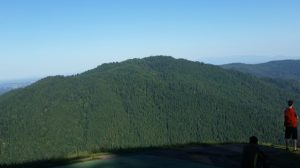
3 May 2022–Including topography—the hills, cliffs and valleys of a landscape—in ground motion models shows where shaking might be most amplified during an earthquake, researchers demonstrate with detailed new models of the Puget Sound region. In their models, Ian Stone of the U.S. Geological Survey and colleagues simulated several magnitude … Continue Reading »
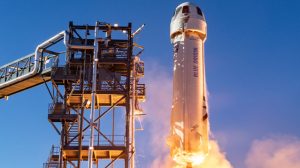
22 April 2022–The presence of an atmospheric acoustic duct, a channel of sound at the boundary between the troposphere and stratosphere, has been verified for the first time by Sandia National Laboratory scientists. Solar hot air balloons carrying microbarometers floating in the lower stratosphere were able to observe infrasound signals … Continue Reading »

22 April 2022–Diamonds that formed deep in the Earth could help seismologists answer a decades-old question: do fluids play a role in generating earthquakes at depths where high pressure should keep brittle failure from happening? Fluid-assisted faulting in subducted slabs 300 to 700 kilometers deep, in the transition zone between … Continue Reading »

22 April 2022–Using a telecommunications fiber-optic-based sensing system, researchers were able to track the spread of sea ice in near-real-time over a 40-kilometer stretch of the Beaufort Sea north of Alaska. The deployment demonstrates a new way to monitor ice formation in a region where ice coverage has economic, cultural … Continue Reading »
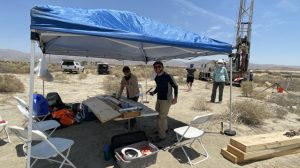
22 April 2022–Sediment cores from the ancient Lake Cahuilla at Coachella in southern California could help seismologists determine whether lake filling events are connected to earthquakes on the Southern San Andreas Fault, according to a presentation at the Seismological Society of America’s Annual Meeting. Lake Cahuilla was a prehistoric lake … Continue Reading »
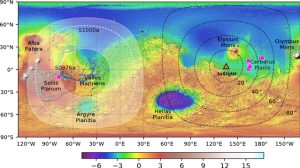
22 April 2022–The seismometer placed on Mars by NASA’s InSight lander has recorded its two largest seismic events to date: a magnitude 4.2 and a magnitude 4.1 marsquake. The pair are the first recorded events to occur on the planet’s far side from the lander and are five times stronger … Continue Reading »

22 April 2022–Like many people, geophysicist Patricia Persaud had big plans for March 2020. She and her students from Louisiana State University were ready to board a plane to install a geophone array in Yangon, Myanmar in collaboration with university professors and students in the city. COVID-19 grounded Persaud and … Continue Reading »
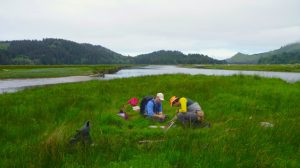
22 April 2022–Sediment cores drawn from the Salmon River Estuary in Oregon suggest that at least 15 meters of megathrust slip happened offshore during the massive 1700 Cascadia earthquake, leading to a meter or more of coastal subsidence, researchers said at the Seismological Society of America’s Annual Meeting. The findings … Continue Reading »
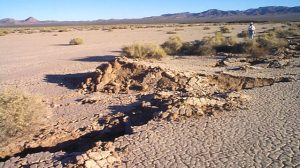
22 April 2022–Earthquake aftershocks form spatial clusters around a mainshock, instead of evenly surrounding the mainshock. Researchers have known this for decades, but the reasons for this clustering are still unclear. To explore this question further, Jeanne Hardebeck of the U.S. Geological Survey took a closer look at the aftershock … Continue Reading »
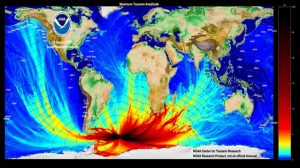
22 April 2022–The 12 August 2021 South Sandwich Island earthquake had a surprise hidden within its complex rupture sequence: a slow, shallow magnitude 8.16 subevent that was “invisible” to researchers at first glance. At the Seismological Society of America’s Annual Meeting, Zhe Jia, a geophysics graduate student at CalTech, described … Continue Reading »
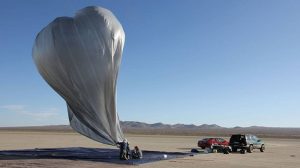
21 April 2022–Earthbound seismologists have the luxury of deploying their seismometers on relatively peaceful ground, but scientists studying Venusquakes have had to set their sights higher. Since high temperatures and pressures on Venus’ surface make it technologically challenging to place seismometers there, researchers are working on balloon-borne instruments that detect … Continue Reading »
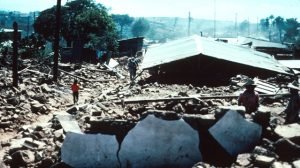
21 April 2022–Public tests of an earthquake early warning system in Nicaragua are among the latest steps in a collaboration to build a warning system for four countries in the region, Frederick Massin of the Swiss Seismological Service at ETH Zürich said at the Seismological Society of America’s Annual Meeting. … Continue Reading »

21 April 2022–Unused telecommunications fiber could form the backbone of earthquake early warning systems that complement existing warning systems and fill in critical gaps such as offshore detection, Robert Mellors said at the Seismological Society of America’s Annual Meeting. Distributed acoustic sensing, or DAS, uses the tiny internal flaws in … Continue Reading »
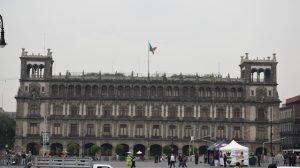
20 April 2022–Small seismic waves generated by urban activity in Mexico City offer a glimpse at how subsiding soils may be speeding up the seismic waves that travel in the shallow layers beneath the city. As groundwater is extracted from beneath the city, the lakebed soils and clays that support … Continue Reading »

13 April 2022–The rise of fiber-optic distributed acoustic sensing (DAS) in seismology could prove a useful addition to earthquake early warning systems, researchers write in the Bulletin of the Seismological Society of America. DAS uses the tiny internal flaws in a long optical fiber as thousands of seismic sensors. An … Continue Reading »
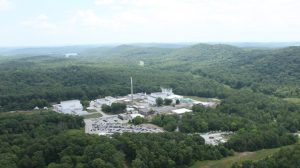
16 March 2022–Seismic and acoustic data recorded 50 meters away from a research nuclear reactor could predict whether the reactor was in an on or off state with 98% accuracy, according to a new study published in Seismological Research Letters. By applying several machine learning models to the data, researchers … Continue Reading »

14 March 2022–Christopher DuRoss of the U.S. Geological Survey, Golden, Adam Ringler of the U.S. Geological Survey, Albuquerque, and Vaclav Vavrycuk of the Institute of Geophysics in the Czech Republic, are the recipients of SSA’s 2021 Outstanding Reviewer awards. In recent interviews, the recipients agreed that reviewing is an essential … Continue Reading »
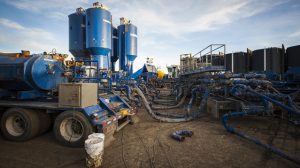
2 March 2022–Researchers were able to observe stress changes before and during an earthquake induced by hydraulic fracturing in Alberta, Canada, with the help of a phenomenon called seismic anisotropy. Seismic anisotropy refers to changes in the velocity of seismic waves dependent on the “fabric” of the rocks that the … Continue Reading »

17 February 2022–Six leading experts in seismic tomography will present their most recent research and their perspective on where their field is headed at Seismic Tomography: What Comes Next? The in-person conference, presented by the Seismological Society of America, is scheduled for 28-30 October 2022 in Toronto, Canada. The keynote … Continue Reading »
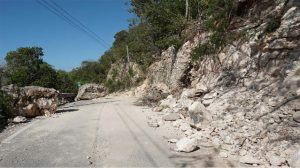
9 February 2022–Field surveys conducted in the days after the 7 January 2020 Puerto Rico earthquake documented more than 300 landslides and severe liquefaction in southern coastal regions, according to a new study by U.S. Geological Survey and University of Puerto Rico Mayagüez researchers. The ground failure that resulted from … Continue Reading »

15 December 2021–Just days after a 2020 magnitude 5.1 earthquake in Tangshan, China, researchers turned nearly 8 kilometers of unused telecom fiber optic cable into a seismic array that detected dozens of aftershocks that were missed by permanent seismic stations. The rapid deployment of the distributed acoustic sensing (DAS) technology … Continue Reading »
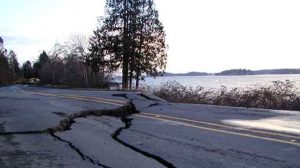
3 December 2021–Three-dimensional fault models are generally more accurate than two-dimensional line models at sending ground shaking alerts to the correct areas as part of an earthquake early warning system, according to a new study. The benefits of 3D fault models vary depending on the fault style (a strike slip … Continue Reading »
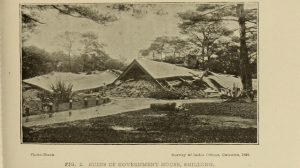
19 November 2021–With data unearthed from seismic stations, observatories and libraries across the world, researchers have pinpointed the location of a massive earthquake that took place in India 125 years ago—one of the largest intraplate earthquakes known to history. The magnitude 8 Great 1897 Shillong Plateau earthquake, sometimes called the … Continue Reading »
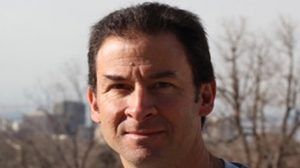
15 November 2021–The Earthquake Engineering Research Institute (EERI) and the Seismological Society of America (SSA) are pleased to announce that David J. Wald, a seismologist with the U.S. Geological Survey’s National Earthquake Information Center (NEIC) in Golden, Colorado, is the 2022 recipient of the William B. Joyner Lecture Award. Wald … Continue Reading »

15 November 2021–The Earthquake Engineering Research Institute (EERI), the Consortium of Organizations for Strong Motion Observation Systems (COSMOS), and SSA are pleased to announce that C.B. Crouse, principal engineer at AECOM, is the recipient of the 2022 Bruce Bolt Medal. The award will be presented at the 12th National Conference … Continue Reading »
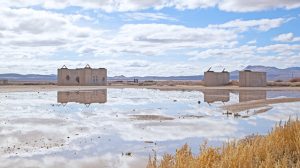
21 September 2021–Researchers at Lawrence Livermore National Laboratory have calculated moment tensors for 130 underground nuclear and 10 chemical test explosions that took place at the Nevada National Security test site. Often represented graphically to resemble a striped “beach ball,” moment tensors “are essentially a mathematical concept that’s used to … Continue Reading »

The generosity of Clarence Allen (1925-2021), SSA’s 41st president, will bring career-changing opportunities to countless scientists in our community. The Seismological Society of America (SSA) announced today that it has received a gift of nearly $1.6 million, a bequest from the estate of renowned seismologist Clarence Allen. The gift from … Continue Reading »

[The election has now closed.] Why Vote? SSA Board of Directors 2022 Election How can SSA best serve its members and meet its mission? I encourage you to ask yourself these questions as you prepare to participate in the 2022 Board of Directors Election. This is your opportunity to select … Continue Reading »

25 August 2021–The Codex Telleriano Remensis, created in the 16th century in Mexico, depicts earthquakes in pictograms that are the first written evidence of earthquakes in the Americas in pre-Hispanic times, according to a pair of researchers who have systematically studied the country’s historical earthquakes. Gerardo Suárez of the Universidad … Continue Reading »

SSA awarded Shanna Chu, Danielle Lindsay and Christina Tsarsitalidou with travel grants to present their research at technical conferences later this Fall. The grants are part of the Global Travel Grant program, which was established to support the careers of student and early-career members. Two student recipients are heading to … Continue Reading »
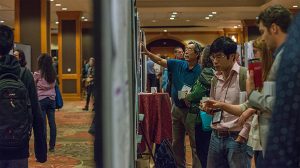
Organizing a technical session for SSA’s Annual Meeting is your opportunity to learn more about seismology and make new connections in our global community. Read on for advice from our members who have organized sessions in the past! Choose a Topic First things first: decide on the specific focus of … Continue Reading »
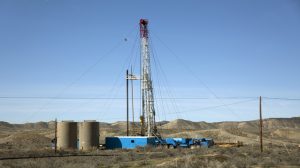
10 August 2021–Earthquakes generated by controlled fluid injection at Colorado’s Rangely oil field were caused by destabilizing fault pore pressure changes, according to a new mechanistic model applied to data from the decades’ old project The Rangely experiment, conducted from 1969 to 1973, is one of the oldest studies of … Continue Reading »
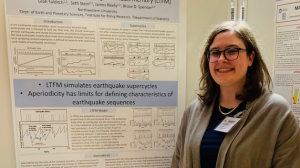
An invitation to submit a paper. International collaboration. Feedback from senior scientists. These career-changing connections happen at scientific conferences. SSA’s Global Travel Grant gives more members the opportunity to enjoy them. Now accepting applications through 31 July 2021, the grant program supports student and early-career members attendance at seismology-related conferences … Continue Reading »
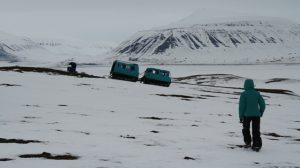
[Lire en français] 8 July 2021–Seismic waves passing through the ground near Longyearbyen in the Adventdalen valley, Svalbard, Norway have been slowing down steadily over the past three years, most likely due to permafrost warming in the Arctic valley. The trend, reported in a new study published in Seismological Research … Continue Reading »

7 July 2021–Although wastewater disposal has been the primary driving force behind increased earthquake activity in southern Kansas since 2013, a new study concludes that the disposal has not significantly changed the orientation of stress in the Earth’s crust in the region. Activities like wastewater disposal can alter pore pressure, … Continue Reading »

16 June 2021–The Seismological Society of America (SSA) announced today the appointment of P. Martin Mai as editor-in-chief of the Bulletin of the Seismological Society of America (BSSA). Mai is a professor of geophysics in the Earth Science and Engineering program of the Physical Sciences and Engineering Division at KAUST. … Continue Reading »
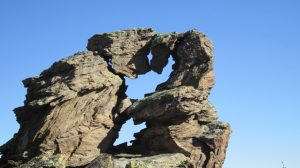
15 June 2021–For the first time, researchers have used precariously-balanced rocks to set the formal design earthquake motions for a major existing engineered structure—the Clyde Dam, the largest concrete dam in New Zealand. Mark Stirling of the University of Otago and colleagues identified and assessed the ages of these gravity-defying … Continue Reading »
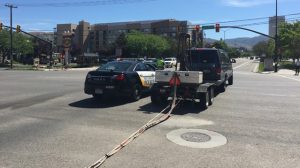
3 June 2021–A complex zone of folding and faulting that links two faults underneath downtown Salt Lake City could deform the ground during a large earthquake, according to a new study. The findings, published in the open-access journal The Seismic Record, suggest that earthquakes magnitude 5.0 and larger could cause … Continue Reading »

1 June 2021–SSA is pleased to announce the recipients of several of the Society’s awards for 2020. The Harry Fielding Reid Medal, the Charles F. Richter Early Career Award and the Frank Press Public Service Award are among the highest honors conferred by the Society. 2021 Harry Fielding Reid Medal: … Continue Reading »
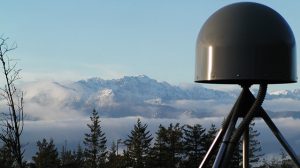
11 May 2021–Researchers have developed a global earthquake monitoring system that uses the Global Navigational Satellite System (GNSS) to measure crustal deformation. The monitoring system within seconds can rapidly assess earthquake magnitude and fault slip distribution for earthquakes of magnitude 7.0 and larger, making it a potentially valuable tool in … Continue Reading »
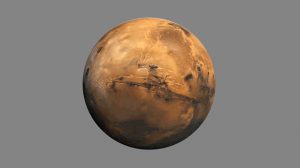
23 April 2021–The SEIS seismometer package from the Mars InSight lander has collected its first continuous Martian year of data, revealing some surprises among the more than 500 marsquakes detected so far. At the Seismological Society of America (SSA)’s 2021 Annual Meeting, Savas Ceylan of ETH Zürich discussed some of … Continue Reading »

23 April 2021–Peggy Hellweg, operations manager for the Berkeley Seismological Laboratory (BSL) at the University of California, Berkeley, was elected president-elect by the Board of the Seismological Society of America on 14 April. Hellweg previously served as SSA Secretary and co-chaired the 100th Anniversary Earthquake Conference, SSA’s joint meeting with … Continue Reading »
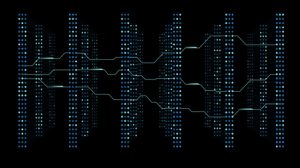
23 April 2021–A deep spatiotemporal neural network trained on more than 36,000 earthquakes offers a new way of quickly predicting ground shaking intensity once an earthquake is underway, researchers report at the Seismological Society of America (SSA)’s 2021 Annual Meeting. DeepShake analyzes seismic signals in real time and issues advanced … Continue Reading »
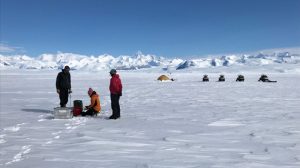
23 April 2021–At the Seismological Society of America’s 2021 Annual Meeting, researchers shared how they are using fiber optic cable to detect the small earthquakes that occur in ice in Antarctica. The results could be used to better understand the movement and deformation of the ice under changing climate conditions, … Continue Reading »

23 April 2021–A Southern California high school junior has built a low-cost seismometer device that delivers earthquake early warnings for homes and businesses. Costing less than $100 for her to make today, the seismometer could someday be a regular household safety device akin to a smart smoke detector, says its … Continue Reading »
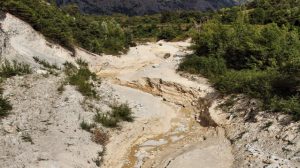
22 April 2021–Machine learning could provide up an extra hour of warning time for debris flows along the Illgraben torrent in Switzerland, researchers report at the Seismological Society of America (SSA)’s 2021 Annual Meeting. Debris flows are mixtures of water, sediment and rock that move rapidly down steep hills, triggered … Continue Reading »
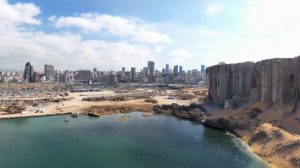
22 April 2021–Days after the 4 August 2020 massive explosion at the port of Beirut in Lebanon, researchers were on the ground mapping the impacts of the explosion in the port and surrounding city. The goal was to document and preserve data on structural and façade damage before rebuilding, said … Continue Reading »
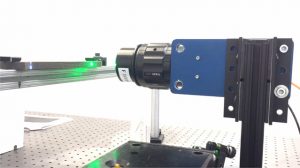
22 April 2021–It seems like a smooth slab of stainless steel, but look a little closer, and you’ll see a simplified cross-section of the Los Angeles sedimentary basin. Caltech researcher Sunyoung Park and her colleagues are printing 3D models like the metal Los Angeles proxy to provide a novel platform … Continue Reading »
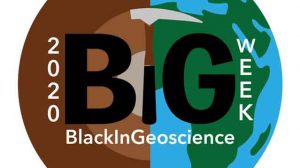
21 April 2021–Concrete efforts to bring racial equity to the geosciences are receiving significant attention in the wake of new grassroots efforts and increased awareness of social justice issues in 2020, speakers said at the Seismological Society of America (SSA)’s 2021 Annual Meeting. Last year’s Black in Geoscience Week, for … Continue Reading »
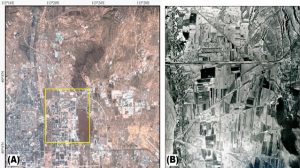
21 April 2021–Decades-old aerial photos of Yudong District, Datong City in Shanxi Province, Northern China have helped researchers in their search for a fault hidden underneath the city’s buildings and cement roads, researchers said at the Seismological Society of America (SSA)’s 2021 Annual Meeting. Analyzing these photos from the 1960s … Continue Reading »
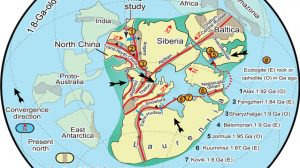
20 April 2021–Seismic profiling of a very stable and ancient continental block in North China may offer clues as to when the Earth’s global subduction network began operating, according to a presentation at the Seismological Society of America (SSA)’s 2021 Annual Meeting. Seismic receiver function studies in part of the … Continue Reading »
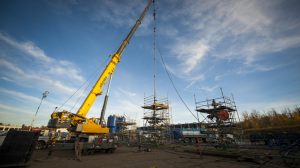
20 April 2021–When hydraulic fracturing operations ground to a halt last spring in the Kiskatinaw area of British Columbia, researchers expected seismic quiescence in the region. Instead, hundreds of small earthquakes occurred for months after operations shut down, according to a new study. In her presentation at the Seismological Society … Continue Reading »
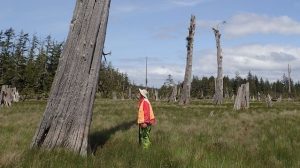
20 April 2021–The famous 1700 Cascadia earthquake that altered the coastline of western North America and sent a tsunami across the Pacific Ocean to Japan may have been one of a sequence of earthquakes, according to new research presented at the Seismological Society of America (SSA)’s 2021 Annual Meeting. Evidence … Continue Reading »
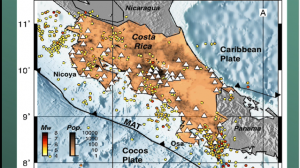
20 April 2021–Earthquake early warnings can be delivered successfully using a small network of off-the-shelf smartphones attached to building baseboards, according to a study conducted in Costa Rica last year. In his presentation at the Seismological Society of America (SSA)’s 2021 Annual Meeting, Ben Brooks of the U.S. Geological Survey … Continue Reading »
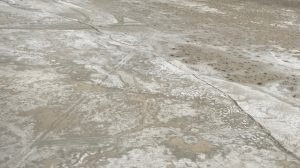
19 April 2021–Boston College seismologist John Ebel and his colleagues have noted a pattern for some large California earthquakes: magnitude 4 or larger earthquakes occur at a higher rate along a fault in the two decades or more prior to a magnitude 6.7 or larger earthquake on the fault. The … Continue Reading »
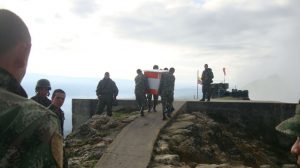
19 April 2021–Data from a GPS network in Colombia have revealed a shallow and fully locked part on the Caribbean subduction zone in the country that suggests a possible large earthquake and tsunami risk for the northwest region. The locked patch south of Cartagena city is capable of generating a … Continue Reading »

13 April 2021–In the Cascadia subduction zone, medium and large-sized “intraslab” earthquakes, which take place at greater than crustal depths within the subducting plate, will likely produce only a few detectable aftershocks, according to a new study. The findings could have implications for forecasting aftershock seismic hazard in the Pacific … Continue Reading »
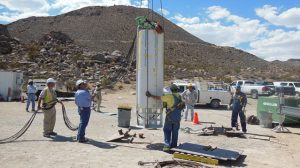
6 April 2021–Comparison of coda waves, the scattered waves that arrive after the direct waves of a seismic event, can be used to determine the relative locations of two underground explosions, according to a new study published in the open-access journal The Seismic Record. The technique, called coda wave interferometry, … Continue Reading »
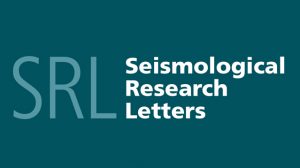
22 March 2021—Seismological Research Letters papers on the 2019 Ridgecrest, California earthquake sequence and papers on seismological tools and instrumentation were among the top-cited papers from the journal published in 2020. The ranking of all papers noted below reflect citation and download numbers through 31 January 2021: D.R. Shelly “A … Continue Reading »
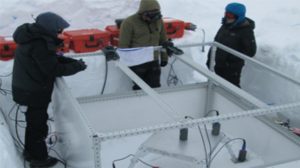
17 March 2021–The NASA-funded Seismometer to Investigate Ice and Ocean Structure (SIIOS) performed well in seismic experiments conducted in snowy summer Greenland, according to a new study by the SIIOS team led by the University of Arizona published this week in Seismological Research Letters. SIIOS could be a part of … Continue Reading »
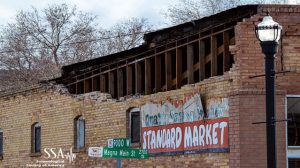
4 March 2021–the first half of 2020, the U.S. Intermountain West region of the United States experienced four significant earthquake sequences, spanning multiple states. In the new issue of SRL, 15 papers characterize these major earthquakes and discuss how they are helping seismologists gain new insights into the tectonics of … Continue Reading »
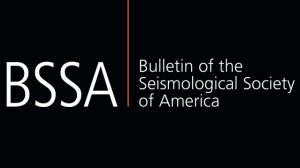
1 March 2021–Five papers from BSSA’s special section on the 2019 Ridgecrest, California earthquake sequence were the top-cited papers from the journal published in 2020. The ranking of all papers noted below reflect citation and download numbers through 31 January 2021: 1.DuRoss. et al. “Surface Displacement Distributions for the July … Continue Reading »
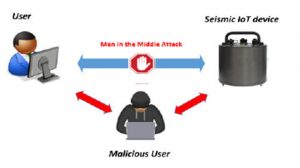
10 February 2021–Seismic monitoring devices linked to the internet are vulnerable to cyberattacks that could disrupt data collection and processing, say researchers who have probed the devices for weak points. Common security issues such as non-encrypted data, insecure protocols, and poor user authentication mechanisms are among the biggest culprits that … Continue Reading »

1 February 2021–Today, the Seismological Society of America is opening submissions for its new open-access journal, The Seismic Record. It’s a thrill to be launching a high-impact, timely and inclusive journal that meets the interests of the seismological community–and we want you to be part of this launch. The Seismic Record provides an … Continue Reading »

14 January 2021–SSA announced the election results from the 8 January 2021 election, conducted by YesElections, formerly known as Election America.
Three new members will join the board for three-year terms, and one board member was re-elected to a second term:
Karen Fischer, Brown University
Zhigang Peng, Georgia Tech University
Xyoli Pérez-Campos, Universidad Nacional Autónoma de México
Carl Tape, University of Alaska Fairbanks … Continue Reading »
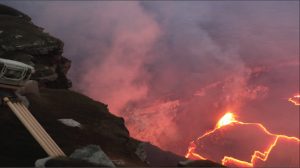
9 December 2020–The summer 2018 eruption of Kīlauea Volcano on the Island of Hawai’i was one of the most significant in the volcano’s history, collapsing a large portion of the summit caldera, erupting massively from its flank and triggering a magnitude 6.9 earthquake in the process. Through it all, scientists … Continue Reading »
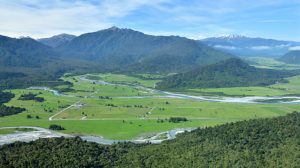
1 December 2020–A rupture along the full length of the fast-slipping Alpine Fault on New Zealand’s South Island poses the largest potential seismic threat to the southern and central parts of the country. But new evidence of a 19th century earthquake indicates that in at least one portion of the … Continue Reading »
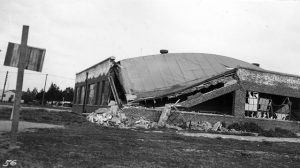
4 November 2020–An earthquake of magnitude 8.0 or larger will almost always cause strong shaking, but a new study suggests that smaller earthquakes—those around magnitude 5.5 or so–are the cause of most occurrences of strong shaking at a 60-kilometer (37-mile) distance. Small earthquakes are expected to produce relatively weak shaking, … Continue Reading »
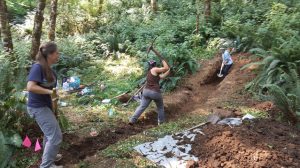
20 October 2020–A paleoseismic trench dug across the Gales Creek fault, located about 35 kilometers (roughly 22 miles) west of Portland, Oregon, documents evidence for three surface-rupturing earthquakes that took place about 8,800, 4,200 and 1,000 years ago. The findings, published in the Bulletin of the Seismological Society of America, … Continue Reading »
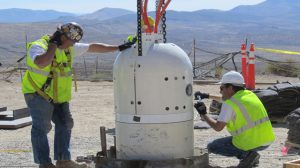
13 October 2020–By comparing two magnitude measurements for seismic events recorded locally, researchers can tell whether the event was a small earthquake or a single-fire buried chemical explosion. The findings, published in the Bulletin of the Seismological Society of America, give seismologists one more tool to monitor nuclear explosions, particularly … Continue Reading »

7 October 2020–An unusually shallow earthquake triggered by hydraulic fracturing in a Chinese shale gas field could change how experts view the risks of fracking for faults that lie very near the Earth’s surface. In the journal Seismological Research Letters, Hongfeng Yang of The Chinese University of Hong Kong and … Continue Reading »

30 September 2020–The 2019 Ridgecrest earthquake sequence has revealed areas of the Los Angeles basin where the amplification of shaking of high-rise buildings is greatest, according to a new report in Seismological Research Letters. The 6 July 2019 magnitude 7.1 earthquake, located 200 kilometers (124 miles) north of Los Angeles, … Continue Reading »
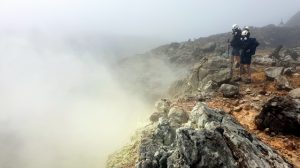
5 August 2020–The heights of La Soufrière de Guadeloupe volcano can be hellish, sweltering at more than 48 degrees Celsius (120 degrees Fahrenheit) and swathed in billows of acidic gas. Researchers would like to monitor gas and steam eruptions at its summit, to learn more about the volcano’s explosive potential, … Continue Reading »
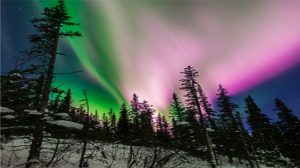
29 July 2020–Aaron Lojewski, who leads aurora sightseeing tours in Alaska, was lucky enough to photograph a “eruption” of brilliant pink light in the night skies one night in February. The same perturbations of the Earth’s magnetic field that lit up the sky for Lojewski’s camera were also captured by … Continue Reading »
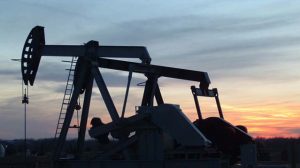
21 July 2020–The depth of a hydraulic fracturing well in Oklahoma, among other factors, increases the probability that fracking will lead to earthquake activity, according to a new report in the Bulletin of the Seismological Society of America. The researchers hope their findings, published as part of an upcoming BSSA … Continue Reading »

Dear SSA Community: As a Society, we seek to do all we can to make science accessible to all. That goal has inspired a new task force to address diversity and inclusion within our community. Chaired by Aaron Velasco, professor of geological sciences and computational sciences at the University of … Continue Reading »
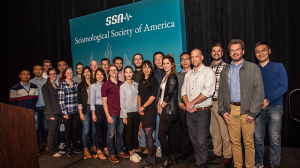
FROM BILL WALTER, PRESIDENT OF SSA 9 July 2020 — Seismology is a global endeavor, and the international scientific community benefits from a free exchange of people as well as ideas. The Administration’s recent proposal to limit participation by international students in US degree programs would be tragic, both for … Continue Reading »

7 July 2020 – Today the Seismological Society of America announced its search for the next Editor-in-Chief (EIC) of Bulletin of the Seismological Society of America (BSSA), its flagship, peer-reviewed international journal. The journal is key to the Society meeting its core mission to advance earthquake science worldwide and to … Continue Reading »
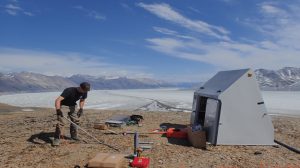
30 June 2020–Adding relatively inexpensive magnetometers to seismic stations across Alaska could help track geomagnetic storms as well as improve the performance of the seismometers, researchers report in the Bulletin of the Seismological Society of America. The paper is one of several included in an upcoming SRL focus section about … Continue Reading »

8 June 2020–SSA is pleased to announce the recipients of several of the Society’s awards for 2020. The Harry Fielding Reid Medal, the Charles F. Richter Early Career Award, the Frank Press Public Service Award and the SSA Distinguished Service Award are among the highest honors conferred by the Society. … Continue Reading »

I write you as the president of SSA, a global society of Earth scientists that values the diversity of voices and backgrounds in our community. Along with the rest of the SSA leadership, I am disturbed and disheartened by the senseless killing of George Floyd in Minneapolis. Recent racist events … Continue Reading »
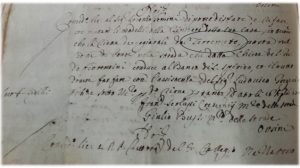
13 May 2020–Three hundred-year-old administrative documents from the Roman government, granting residents permission to repair damage to their buildings, can help modern-day seismologists calculate intensities for a notable sequence of earthquakes that struck central Italy in 1703. Details gleaned from these “Lettere Patenti” offer a unique glimpse at the geographical … Continue Reading »
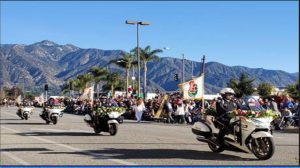
6 May 2020–Yes, there’s a prize for the most beautiful flower-filled float in the Rose Parade each year, but how about a prize for the most ground-shaking marching band? According to a new study, the 2020 honors go to the Southern University and A&M College, followed closely by the hometown … Continue Reading »
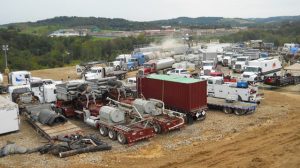
28 April 2020–Hydraulic fracturing for oil and gas production can trigger earthquakes, large and small. A new approach to managing the risk from these quakes could help operators and regulators hit the brakes early enough to prevent nuisance and reduce the chance of property damage and injury. The approach, published … Continue Reading »
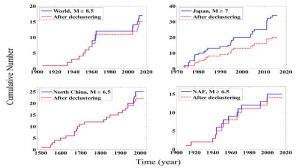
14 April 2020–At the regional level and worldwide, the occurrence of large shallow earthquakes appears to follow a mathematical pattern called the Devil’s Staircase, where clusters of earthquake events are separated by long but irregular intervals of seismic quiet. The finding published in the Bulletin of the Seismological Society of … Continue Reading »
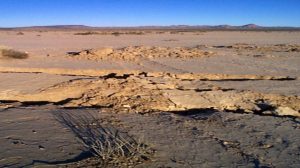
7 April 2020–In complex fault zones, multiple seemingly disconnected faults can potentially rupture at once, increasing the chance of a large damaging earthquake. Recent earthquakes including the 1992 Landers, 1999 Hector Mine and 2019 Ridgecrest earthquakes in California, among others, ruptured in this way. But how can seismologists predict whether … Continue Reading »

30 January 2020–Nearly 40 years ago, analog data tapes faithfully recorded intense seismic activity in the two months before the historic eruption of Mount St. Helens in Washington State in May 1980. It took some lengthy and careful restoration efforts—including a turn in a kitchen oven for some of the … Continue Reading »
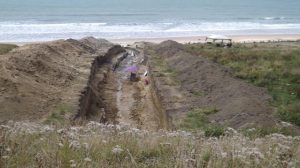
28 January 2020–Earthquakes along a complex series of faults in the upper plate of New Zealand’s northern Hikurangi Subduction Margin were responsible for coastal uplift in the region, according to a new evaluation of local marine terraces. The findings, reported in the Bulletin of the Seismological Society of America, could … Continue Reading »

22 January 2020–The 2019 Ridgecrest earthquake sequence, which startled nearby California residents over the 4 July holiday with magnitude 6.4 and magnitude 7.1 earthquakes, included 34,091 earthquakes overall, detailed in a high-resolution catalog created for the sequence. The catalog, developed by David Shelly at the U.S. Geological Survey in Golden, … Continue Reading »

7 January 2020–The magnitude of the Great Lisbon Earthquake event, a historic and devastating earthquake and tsunami that struck Portugal on All Saints’ Day in 1755, may not be as high as previously estimated. In his study published in the Bulletin of the Seismological Society of America, Joao F. B. … Continue Reading »

16 December 2019–The term “public service” has broad meaning when it comes to the Frank Press Public Service Award, which the Seismological Society of America created to honor outstanding efforts on behalf of seismology and public safety. In part, the award has a broad reach due to the trailblazing and … Continue Reading »

3 December 2019–Each hair-thin glass fiber in a buried fiber optic cable contains tiny internal flaws—and that’s a good thing for scientists looking for new ways to collect seismic data in places from a busy urban downtown to a remote glacier. In Seismological Research Letters, California Institute of Technology seismologist … Continue Reading »
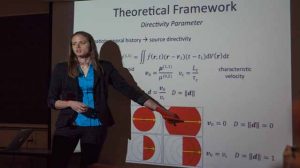
20 November 2019–The terms may seem interchangeable to a layperson, but “hazard” and “risk” mean very different things in earthquake science. A seismic hazard is a natural phenomenon such as the level of ground shaking caused by an earthquake. Seismic risk, on the other hand, refers to the probability that … Continue Reading »
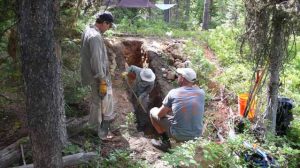
19 November 2019–Hand-dug trenches around Leigh Lake in Grand Teton National Park in Wyoming reveal evidence for a previously unknown surface-faulting earthquake in along the Teton Fault—one occurring about 10,000 years ago. Together with evidence from the site of a second earthquake that ruptured around 5,900 years ago, the findings … Continue Reading »
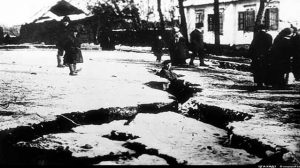
6 November 2019–The season that an earthquake occurs could affect the extent of ground failure and destruction that the event brings, according to a new look at two historical earthquakes that occurred about 100 years ago near Almaty, Kazakhstan. In a paper published in Seismological Research Letters, researchers conclude that … Continue Reading »

31 October 2019–The Earthquake Engineering Research Institute (EERI) and the Seismological Society of America (SSA) are pleased to announce that Julian J. Bommer, a Senior Research Investigator at Imperial College London, is the 2020 recipient of the William B. Joyner Lecture Award. Bommer will deliver the Joyner Lecture at the … Continue Reading »
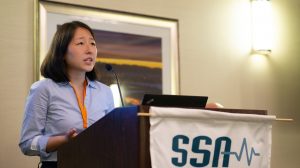
Isabel Hong has always been enthralled with earthquakes. As an elementary student growing up in Washington state, she made frequent leaps under her school desk for earthquake drills. And when an earthquake finally rocked her hometown, she felt prepared. “I wasn’t fearful. I knew just what to do,” recalled Hong, … Continue Reading »
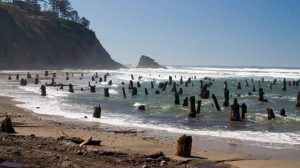
29 October 2019–By combining models of magnitude 9 to 9.2 earthquakes on the Cascadia Subduction Zone with geological evidence of past coastal changes, researchers have a better idea of what kind of megathrust seismic activity was behind the 1700 Cascadia earthquake. The analysis by Erin Wirth and Arthur Frankel of … Continue Reading »
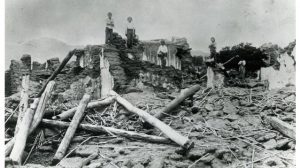
23 October 2019–Although he grew up in Switzerland and received his Ph.D. at the University of Basel, much of Max Suter’s career has been centered on Mexico. From the Trans-Mexican Volcanic Belt in central Mexico to the Basin and Range province of northwestern Mexico, his research has identified and characterized … Continue Reading »
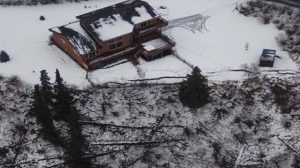
22 October 2019–Major landslides triggered by the 1964 magnitude 9.2 Great Alaska earthquake responded to, but were not reactivated by, the magnitude 7.1 Anchorage earthquake that took place 30 November 2018, researchers concluded in a new study published in Seismological Research Letters. The shaking that accompanied the 2018 earthquake was … Continue Reading »
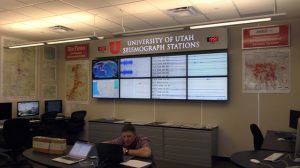
2 October 2019–The International Monitoring System is the top global seismic network for monitoring nuclear weapon tests around the world. To expand the system’s detection capabilities, however, international monitors should seek out the data, methods and expertise of smaller regional seismic networks. In a paper published as part of an … Continue Reading »

16 September 2019–Earthquake faults have short memories—or at least, that’s what the traditional earthquake cycle model suggests. Based on the elastic rebound theory proposed by Harry Fielding Reid after the 1906 San Francisco earthquake, the traditional model assumes that each earthquake in an area occurs independently of one another, and … Continue Reading »
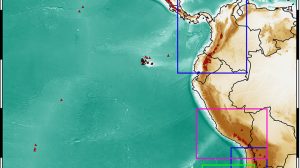
5 September 2019–The eastern Pacific Ocean margin stretching from Mexico to southern Chile offers seismologists a “natural laboratory” in which to study and test ideas about the processes of subduction zones, which are associated with some of the world’s largest recorded earthquakes in the region, as well as phenomena such … Continue Reading »
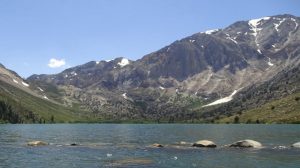
SSA announces the 2020 election to select four new members to serve three-year terms on the Board of Directors. The seven candidates and their statements are presented below, in alphabetical order by last name; in order by last name, these candidates are Annemarie Baltay, Susan Bilek, Matthew Gerstenberger, Hiroshi Kawase, … Continue Reading »
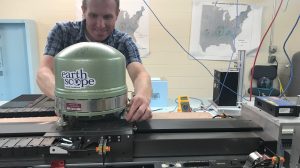
15 August 2019–Seismic networks depend on good instrumentation. But testing sensitive seismic instruments to make sure they’re working right can be a challenge, as Adam Ringler, a physical scientist with the U.S. Geological Survey, knows well. “Seismometers aren’t only sensitive to ground motion, which you want, they’re also sensitive to … Continue Reading »
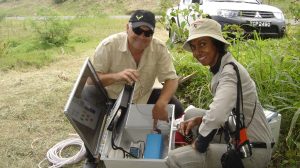
15 July 2019 –Joan Latchman, a seismologist at The University of the West Indies Seismic Research Centre, was born in Trinidad and Tobago and grew up just a 15-minute walk from the Centre – then known as the Seismic Research Unit. At the time, the Centre had a low profile, … Continue Reading »

18 June 2019–The unusual appearance of deep-sea fish like the oarfish or slender ribbonfish in Japanese shallow waters does not mean that an earthquake is about to occur, according to a new statistical analysis. The study published in the Bulletin of the Seismological Society of America contradicts long-held Japanese folklore … Continue Reading »
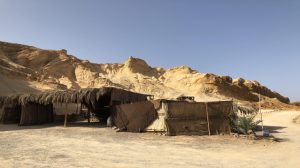
12 June 2019–Researchers who took a closer look at a 1995 tsunami in the Gulf of Elat-Aqaba, at the northeastern tip of the Red Sea, say that the gulf’s surrounding countries should prepare for future tsunami hazards in the economically developing vital region. A team of scientists led by Amos … Continue Reading »

11 June 2019–A comprehensive catalog of earthquake sequences in Texas’s Fort Worth Basin, from 2008 to 2018, provides a closer look at how wastewater disposal from oil and gas exploration has changed the seismic landscape in the basin. In their report published in the Bulletin of the Seismological Society of … Continue Reading »
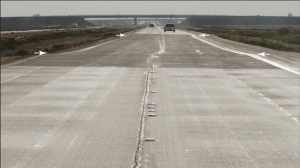
11 June 2019–New mechanical modeling of a network of active strike-slip faults in California’s Imperial Valley suggests the faults are continuously linked, from the southern San Andreas Fault through the Imperial Fault to the Cerro Prieto fault further to the south of the valley. Although more studies are needed to … Continue Reading »
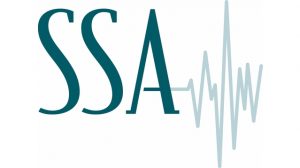
23 May 2019–SSA is pleased to announce the recipients of several of the Society’s awards for 2019. The Harry Fielding Reid Medal, the Charles F. Richter Early Career Award and the Frank Press Public Service Award are among the highest honors conferred by the Society. The Reid Medal recipient is Karen Fischer of … Continue Reading »
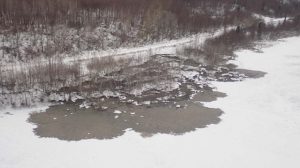
26 April 2019–A day after the 30 November 2018 magnitude 7 earthquake in Anchorage, Alaska, U.S. Geological Survey scientists Robert Witter and Adrian Bender had taken to the skies. The researchers were surveying the region from a helicopter, looking for signs of ground failure from landslides to liquefaction. As Witter … Continue Reading »
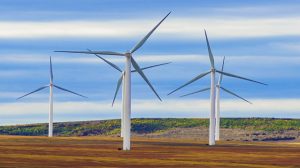
26 April 2019–Using a dense sensor network that scanned the United States between 2003 and 2014, researchers have identified areas within the country marked by a persistent seismic signal caused by industrial processes. At the 2019 SSA Annual Meeting, Omar Marcillo of Los Alamos National Laboratory said that he and … Continue Reading »
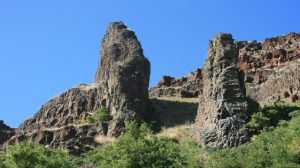
26 April 2019–About 16.7 million years ago, the Columbia River flood basalt event covered much of eastern Oregon, parts of western Idaho and southern Washington state. The massive outpouring of basalt lava, covering about 63,000 square miles of the Pacific Northwest, is thought to have originated from the Yellowstone volcanic … Continue Reading »
26 April 2019–In the past decade scientists have been experimenting with metamaterials, artificial materials designed with periodic internal structures to give them properties not found in natural materials. Depending on their internal geometry and composition, researchers have found that they can control waves propagating through some of these materials, filtering … Continue Reading »

25 April 2019–Small earthquakes in Ohio, Pennsylvania, West Virginia, Oklahoma and Texas can be linked to hydraulic fracturing wells in those regions, according to researchers speaking at the SSA 2019 Annual Meeting. While relatively rare compared to earthquakes caused by wastewater disposal in oil and gas fields in the central … Continue Reading »
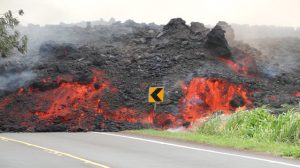
25 April 2019–Ever since Hawaii’s Kilauea stopped erupting in August 2018, ceasing activity for the first time in 35 years, scientists have been wondering about the volcano’s future. Its similarities to the Hawaiian seamount Lo`ihi might provide some answers, according to Jacqueline Caplan-Auerbach at Western Washington University. In her presentation … Continue Reading »

25 April 2019–A spring surge of meltwater, seeping through vertically tilted layers of rock, caused a seismic swarm near California’s Long Valley Caldera in 2017, according to research presented at the 2019 SSA Annual Meeting. The unusual event prompted U.S. Geological Survey researcher Emily Montgomery-Brown and her colleagues to look … Continue Reading »
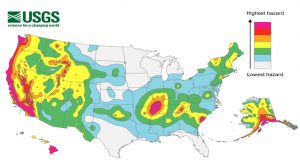
24 April 2019–Researchers at the SSA 2019 Annual Meeting are discussing proposed revisions to the National Seismic Hazard Model (NSHM). The draft report concludes that there could be significantly increased ground shaking across many locations in the central and eastern United States, as well as four urban areas built on … Continue Reading »
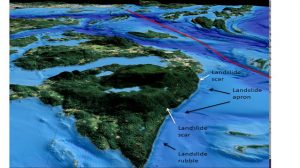
24 April 2019–The central Salish Sea of the Pacific Northwest is bounded by two active fault zones that could trigger rockfalls and slumps of sediment that might lead to tsunamis, according to a presentation at the 2019 SSA Annual Meeting. These tsunamis might be directed toward the islands of San … Continue Reading »

24 April 2019–Using ground motions generated for a range of simulated magnitude 9 earthquakes in the Pacific Northwest, researchers are testing how well reinforced concrete walls might stand up under such seismic events. The walls may not fare so well, especially within the city of Seattle, said University of Washington … Continue Reading »
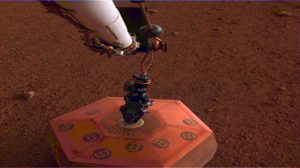
23 April 2019–NASA’s InSight mission has detected its first likely “quake” on Mars. At the opening of the 2019 SSA Annual Meeting, InSight Principal Investigator Bruce Banerdt of NASA’s Jet Propulsion Laboratory described the finding by the lander and discussed the hopeful future of Martian seismology. Watch the video of … Continue Reading »
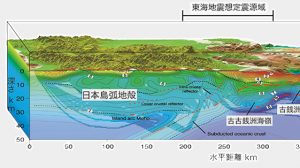
22 April 2019–This year’s SSA Annual Meeting includes three joint sessions with the Seismological Society of Japan, continuing a long-standing partnership with SSJ and SSA members. The three session topics—Machine Learning in Seismology, Next Generation Earthquake Early Warning Systems: Advances, Innovations and Applications and The Science of Slow Earthquakes from … Continue Reading »
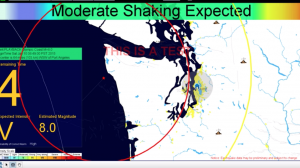
Earlier this year, Los Angeles became one of the first cities in the country to roll out ShakeAlert – a dedicated earthquake early warning system. Advanced warning of an earthquake has long been a goal for everyone from seismologists to local governments. Especially in cities like Los Angeles, located along … Continue Reading »
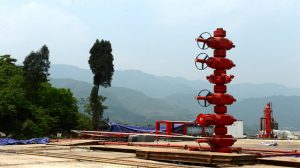
[讀中文] 5 April 2019–Two moderate-sized earthquakes that struck the southern Sichuan Province of China last December and January were probably caused by nearby fracking operations, according to a new study published in Seismological Research Letters. The December 2018 magnitude 5.7 and the January 2019 magnitude 5.3 earthquakes in the South … Continue Reading »
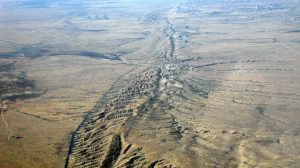
3 April 2019–There have been no major ground rupturing earthquakes along California’s three highest slip rate faults in the past 100 years. A new study published in Seismological Research Letters concludes that this current “hiatus” has no precedent in the past 1000 years. U.S. Geological Survey researchers Glenn Biasi and … Continue Reading »
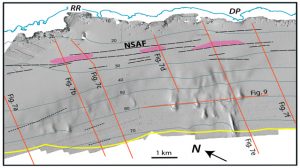
26 March 2019–A new high-resolution map of a poorly known section of the northern San Andreas Fault reveals signs of the 1906 San Francisco earthquake, and may hold some clues as to how the fault could rupture in the future, according to a new study published in the Bulletin of … Continue Reading »
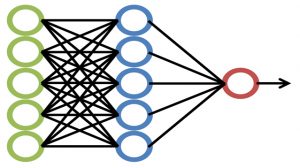
1 March 2019–With a growing wealth of seismic data and computing power at their disposal, seismologists are increasingly turning to a discipline called machine learning to better understand and predict complicated patterns in earthquake activity. In a focus section published in the journal Seismological Research Letters, researchers describe how they … Continue Reading »
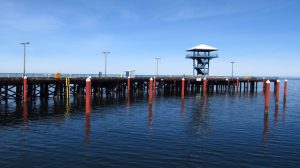
15 February 2019–Hourly water level records collected from tide gauges can be used to measure land uplift caused by episodic tremor and slip of slow earthquakes in the Cascadia Subduction Zone, according to a new report in the Bulletin of the Seismological Society of America. Global Positioning System (GPS) data … Continue Reading »

By mathematically modeling the movements of a locomotive that toppled from the tracks north of San Francisco during the city’s infamous 1906 earthquake, researchers have calculated a lower limit on the earthquake ground motion at the spot of the tipped train. Their report in the journal Seismological Research Letters concludes … Continue Reading »
The Seismological Society of America held its Board of Directors election on Friday, 4 January 2019. The following nominees for Director were elected to a three-year term beginning in April 2019 at the SSA Annual Meeting in Seattle: Heather DeShon, Associate Professor, Southern Methodist University Heather DeShon’s principal fields of … Continue Reading »
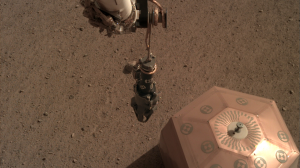
SSA has added a new technical session for the 2019 SSA Annual Meeting: “The InSight Mission – Seismology on Mars and Beyond.” The deadline to submit abstracts to this special session is Thursday, 17 January at 5 p.m. Pacific. Session Description: The InSight mission landed on Mars on November 26, … Continue Reading »
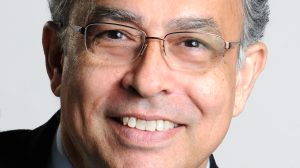
The Consortium of Strong Motion Observation Systems (COSMOS), Earthquake Engineering Research Institute (EERI) and SSA have selected Yousef Bozorgnia as the 2019 recipient of the Bruce Bolt Medal. Bozorgnia, a professor at the University of California, Los Angeles in both the Department of Civil and Environmental Engineering and the John … Continue Reading »

28 December 2018–A low-cost earthquake early warning system provided a map of expected ground shaking around the epicenter of February’s magnitude 6.4 Hualien earthquake within two minutes of the mainshock’s start, according to a new study by seismologists at the National Taiwan University, which deployed the system. The predicted shake … Continue Reading »
SSA announced 21 student and international members will receive travel grants to attend the Annual Meeting in Seattle, to be held 23–26 April 2019. These travel grants are made possible by member contributions to the Kanamori Fund, the General Fund and the Student Travel Fund. Grant recipients receive complimentary conference registration and a cash stipend for transportation, food and lodging. The 21 recipients of … Continue Reading »
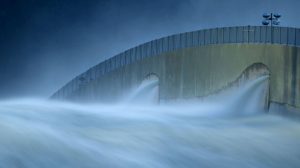
18 December 2018–A closer look at small earthquakes that took place at the Oroville Dam in California’s Sierra Nevada foothills in February 2017—near the time when the dam’s spillway failed—suggest that the seismic activity was related to reservoir discharge that opened and closed fractures in the rock below the spillway. … Continue Reading »
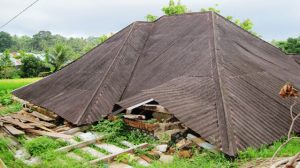
11 December 2018–Using data gleaned from historical reports, researchers have now identified the sources of some of the most destructive Indonesian earthquakes in Java, Bali and Nusa Tenggara, using these data to independently test how well Indonesia’s 2010 and 2017 seismic hazard assessments perform in predicting damaging ground motion. The … Continue Reading »
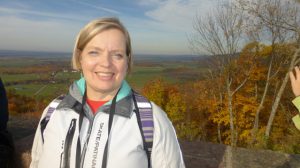
SAN FRANCISCO (3 December 2018) – The Seismological Society of America (SSA) announced today the appointment of Allison Bent, a research seismologist with Natural Resources Canada, as editor-in-chief of Seismological Research Letters (SRL). Accessible by all SSA members and available in more than 1,300 academic, government and corporate institutions worldwide, … Continue Reading »
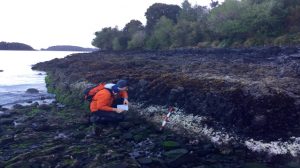
6 November 2018–A bleached fringe of dead marine algae, strung along the coastlines of two islands off the coast of Chile, offers a unique glimpse at how the land rose during the 2016 magnitude 7.6 Chiloé earthquake, according to a new study in the Bulletin of the Seismological Society of … Continue Reading »

31 October 2018–The depth of the rock layer that serves as the disposal site for wastewater produced during unconventional oil extraction plays a significant role in whether that disposal triggers earthquakes in the U.S., according to a new study that takes a broad look at the issue. The research published … Continue Reading »
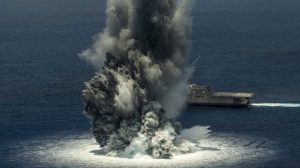
16 October 2018–Underwater explosions detonated by the U.S. Navy to test the sturdiness of ships’ hulls have provided seismologists with a test opportunity of their own: how much can we know about an underwater explosion from the seismic and acoustic data it generates? In a study published in the Bulletin … Continue Reading »
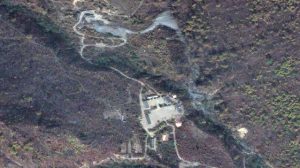
26 September 2018–The epicenter of the 3 September 2017 nuclear test explosion in North Korea occurred about 3.6 kilometers northwest of the country’s first nuclear test in October 2006, according to a new high-precision analysis of the explosion and its aftermath. The study published in Seismological Research Letters by Lian-Feng Zhao … Continue Reading »
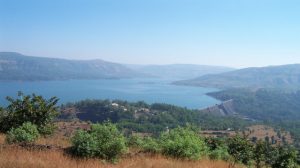
25 September 2018–The seasonal filling and emptying of reservoirs in India can cause measurable deformation of the surrounding rock, reducing the strength of nearby faults and potentially triggering earthquakes, according to two new papers published in the Bulletin of the Seismological Society of America. Researchers in India used global positioning … Continue Reading »
SSA announces the candidates for the 2019 election to add four members to the Board of Directors. The nominating committee, chaired by Jim Mori, confirmed a slate of six individuals to run for office. The committee included: Jim Mori (Kyoto University) Rachel Abercrombie (Boston University) Gail Atkinson (Western University) Ken … Continue Reading »
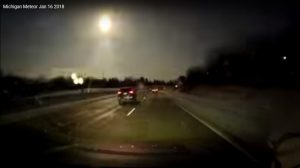
22 August 2018–The bright flashes that lit up the evening skies near Detroit, Michigan earlier this year were not the only signs of the meteor that disintegrated in the atmosphere on 17 January 2018. The meteor explosion was also captured by infrasonic microphones and seismometers, offering a rare chance to … Continue Reading »
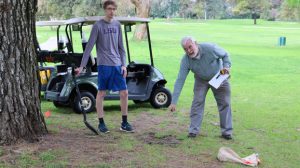
1 August 2018–Using an array of coffee-can sized geophones deployed for about a month in backyards, golf courses and public parks, researchers collected enough data to allow them to map the depth and shape of the San Gabriel and San Bernardino sedimentary basins of Los Angeles, California. Seismologists think these … Continue Reading »

14 June 2018–SSA is pleased to announce the recipients of several of the Society’s awards for 2018. The Harry Fielding Reid Medal, the Charles F. Richter Early Career Award and the Frank Press Public Service Award are among the highest honors conferred by the Society. The Reid Medal recipient is David M. … Continue Reading »
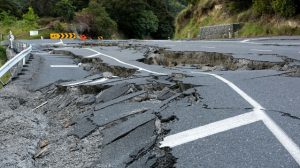
13 June 2018–Since 2007, the Collaboratory for the Study of Earthquake Predictability or CSEP has been studying earthquake forecast models to find out how well each model stacks up against its competitors, and how well each forecast predicts later seismic activity. At four centers in California, New Zealand, Europe and … Continue Reading »
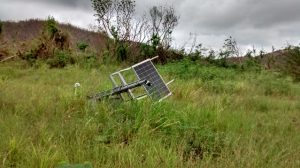
17 May 2018–SSA plans to hold its annual meeting in San Juan, Puerto Rico in 2022, the society’s new president Peter Shearer announced 14 May at the opening ceremony that welcomed participants to the Seismology of the Americas conference. The 14-17 May gathering in Miami brought together SSA and the … Continue Reading »
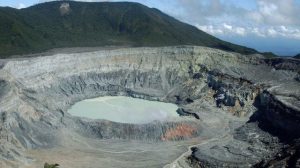
17 May 2018–Repeating seismic events—events that have the same frequency content and waveform shapes—may offer a glimpse at the movement of magma and volcanic gases underneath Turrialba and Poas, two well-known active volcanoes in Costa Rica. At the 2018 SSA Annual Meeting, Rebecca Salvage of the Observatorio Vulcanologico y Sismologico … Continue Reading »
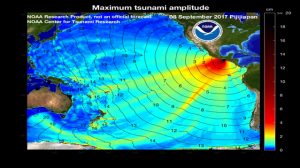
17 May 2018–The shape of the continental shelf off the southern Mexican coast played a role in the formation of long-lasting tsunami edge waves that appeared after last September’s magnitude 8.2 earthquake, according to researchers speaking at the SSA 2018 Annual Meeting. Edge waves are coastal waves generated by a … Continue Reading »

17 May 2018–Can altering the amount or rate of fluid injection and production in an oil and gas field or carbon storage site affect induced earthquakes in that field? A physics-based simulation presented at the 2018 SSA Annual Meeting suggests that this type of “active pressure management” can be useful … Continue Reading »
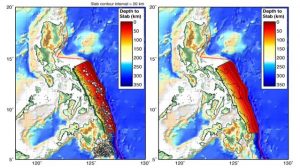
16 May 2018–This spring, researchers will release an expanded database that covers the geometry of most of the world’s subducting slabs, the massive pieces of the Earth’s crust that sink into the mantle at tectonic plate boundaries. Called Slab2, the updated database will help researchers determine the impact of 3-D … Continue Reading »
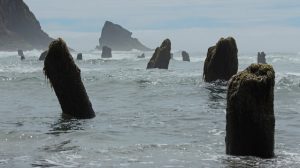
16 May 2018–Devastating magnitude 8.0 to 9.0 megathrust earthquakes and accompanying tsunamis appear to have hit the U.S. Pacific Northwest and Southwest Canada about every 500 years on average. But some scientists think the recurrence interval between some of these large earthquakes may be shorter—along the lines of every 300 … Continue Reading »
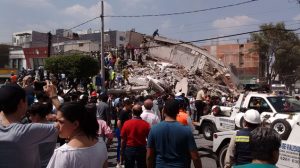
16 May 2018–Last September’s magnitude 8.2 Tehuantepec earthquake and the magnitude 7.1 Puebla-Morelos earthquakes in Mexico led to an intense period of study for Latin American seismologists, with new research on everything from strong motion records to tsunamis generated by the two significant events. The 2018 SSA Annual Meeting devoted … Continue Reading »
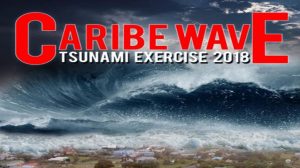
16 May 2018–The 2004 Indian Ocean tsunami has researchers reevaluating whether a magnitude 9.0 megathrust earthquake and resulting tsunami might also be a likely risk for the Caribbean region, seismologists reported at the SSA 2018 Annual Meeting. “Before 2004, we thought an earthquake of about 8.0 was about right for … Continue Reading »
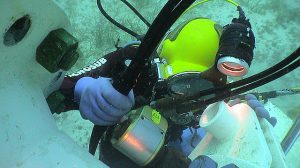
16 May 2018–There are more than a million kilometers of underwater telecommunication cables lining the world’s ocean floor. Scientists would like to outfit those cables with environmental sensors—including seismometers—to improve the speed and success of tsunami warnings and to create better models of the Earth’s interior. At the 2018 SSA … Continue Reading »
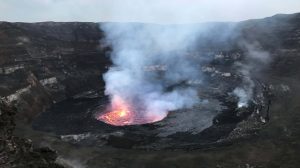
15 May 2018–Nyiragongo in the Democratic Republic of the Congo is among the world’s most active volcanoes, with a persistent lava lake as one of its defining features. In a talk at the 2018 SSA Annual Meeting, Adrien Oth of the European Center for Geodynamics and Seismology discussed how he … Continue Reading »
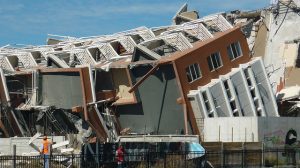
[Leer en español] 15 May 2018–New seismic hazard and risk models developed for South America suggest that more than 160 million people—about one-third of the continent’s total population—live in areas with significantly elevated seismic hazard, according to a report discussed at the 2018 SSA Annual Meeting. Risk is greatest in … Continue Reading »
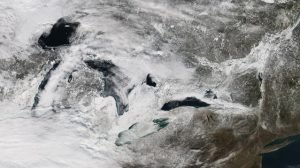
15 May 2018–Record cold temperatures during the winter of 2014 in the Midwestern United States froze large parts of the Great Lakes—and inadvertently offered seismologists a chance to learn more about the seismic signals created by the lakes’ wind-driven waves. The deep freeze stilled the waves and created a period … Continue Reading »
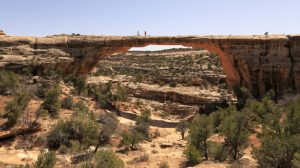
15 May 2018–Scientists monitoring the vibrations of natural rock arches have found that the resonant frequencies of arches undergo dynamic changes from day to day, according to research presented at the 2018 SSA Annual Meeting. University of Utah doctoral student Paul Geimer and colleagues are analyzing these frequency changes to … Continue Reading »
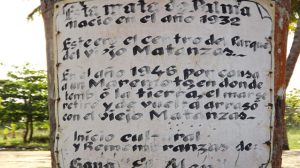
15 May 2018–Almost 70 years later, the man remembers the August day in Playa Rincon, when he clung to the top of an almond tree to survive a tsunami where the waters rushed about 700 meters inland after a magnitude 8.1 earthquake. His recollections and other astonishing eyewitness accounts of … Continue Reading »
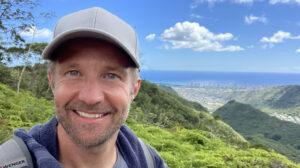
10 March 2025—“Moment tensors are a model to describe earthquake sources based on forces acting at the seismic source,” explains Boris Rösler. “In the 1960s, it was shown that these forces generate a seismic wavefield equivalent to slip on a fault. We can thus describe the geologic process of an … Continue Reading »




































![[caption id="attachment_41055" align="aligncenter" width="640"] The Physics Experiment 1-A field team outside the entrance to P-tunnel at Nevada National Security Site. | LLNL[/caption]](https://www.seismosoc.org/wp-content/uploads/2024/04/Myers-640x358px-300x168.jpg)








































































































































































































